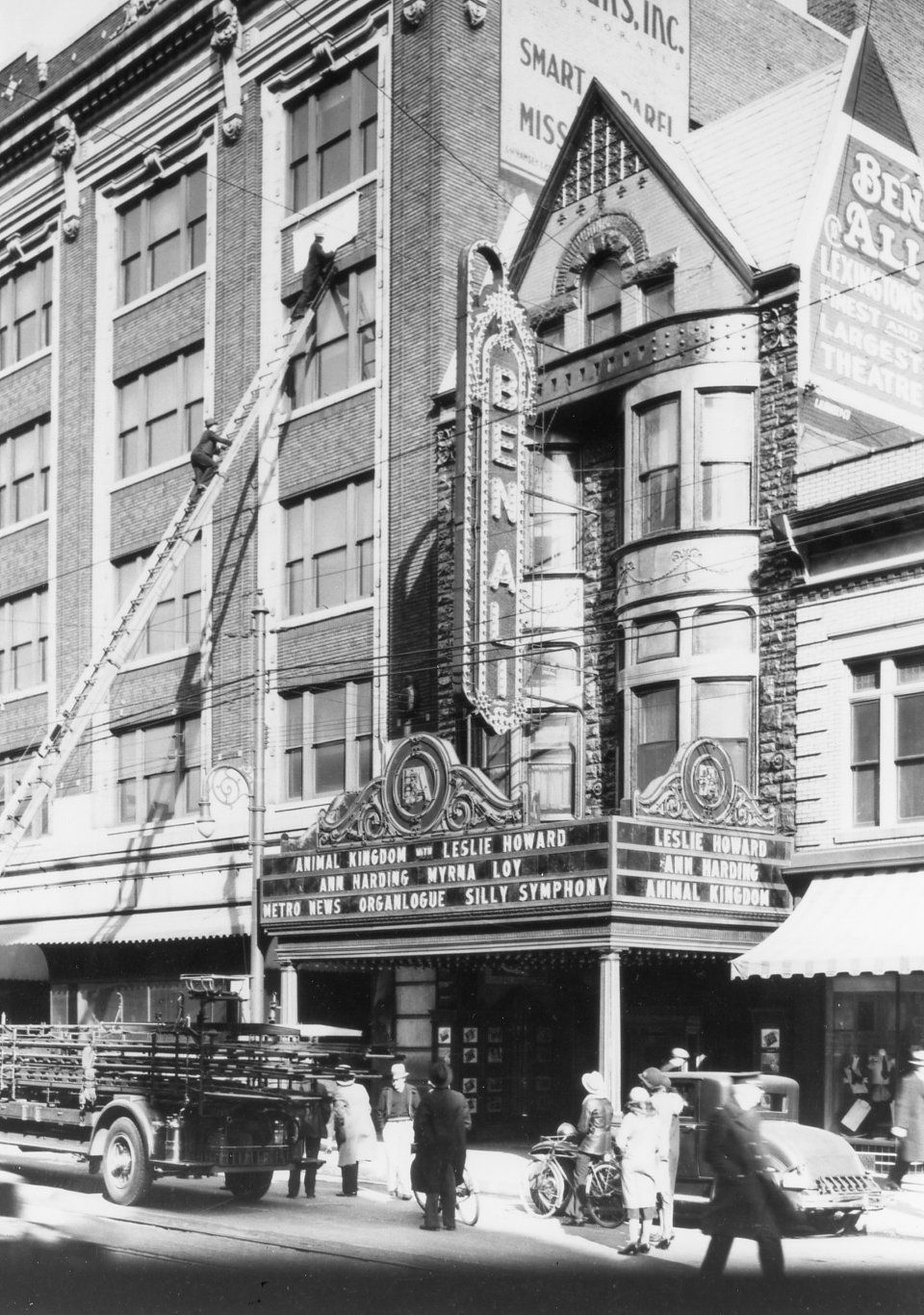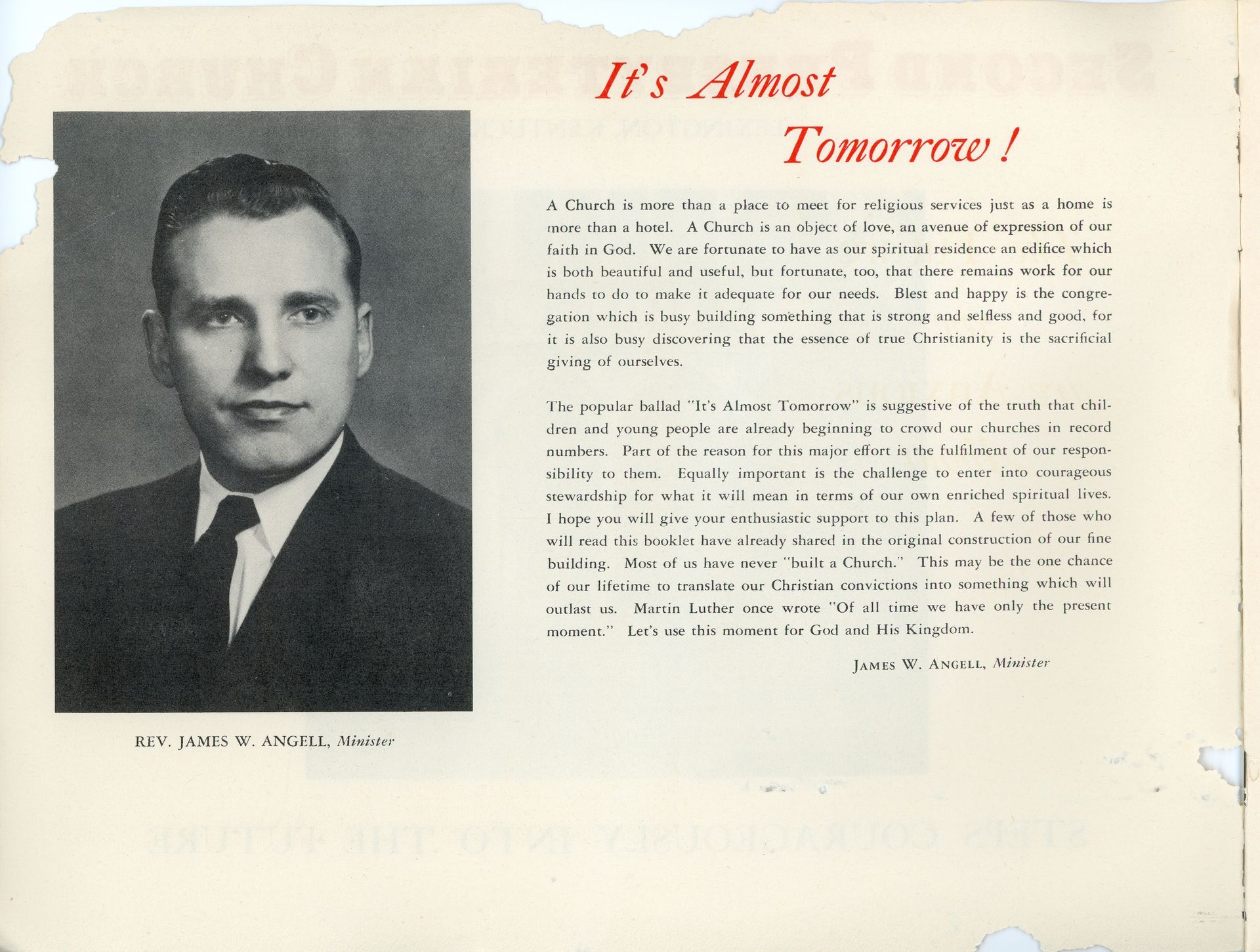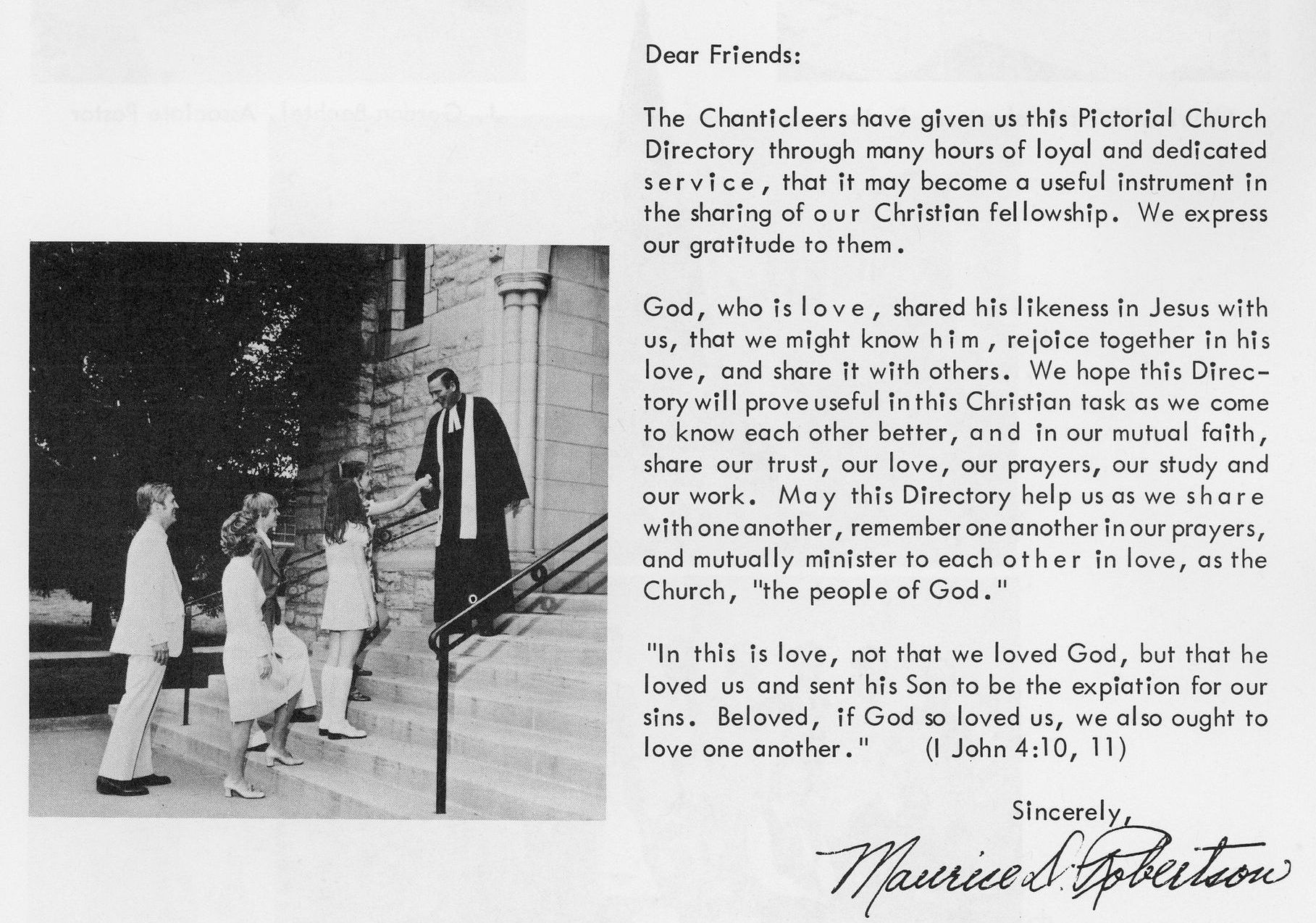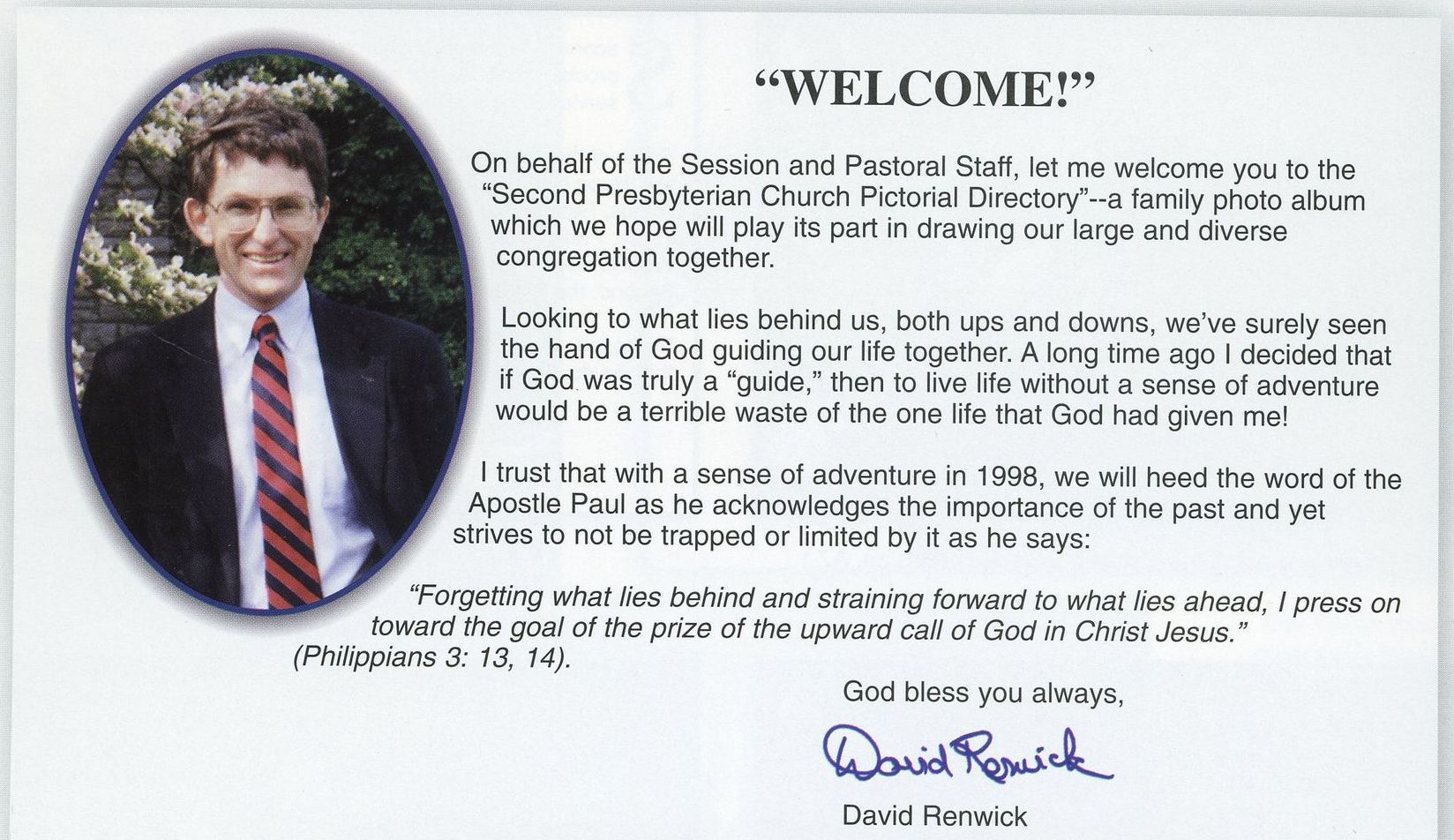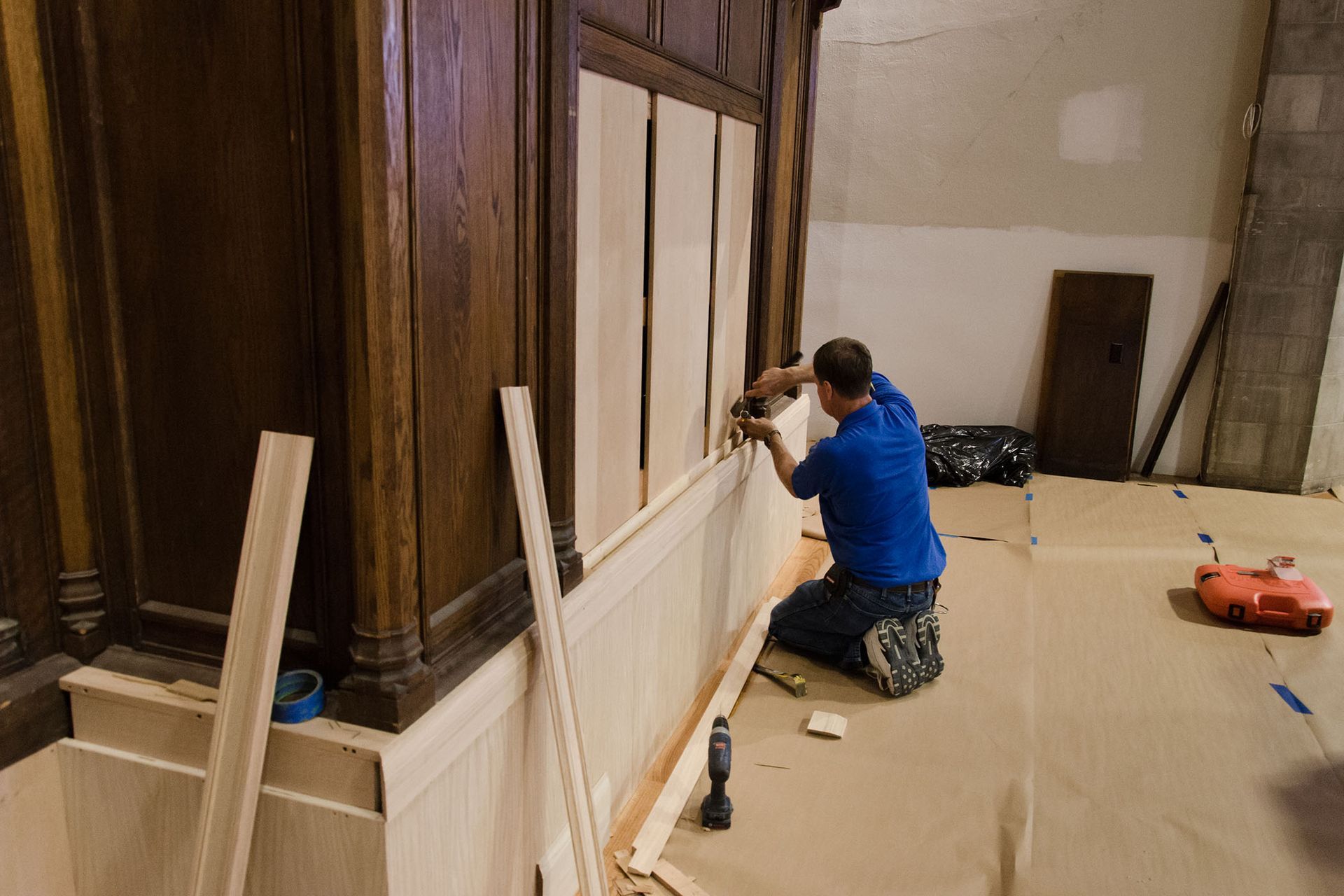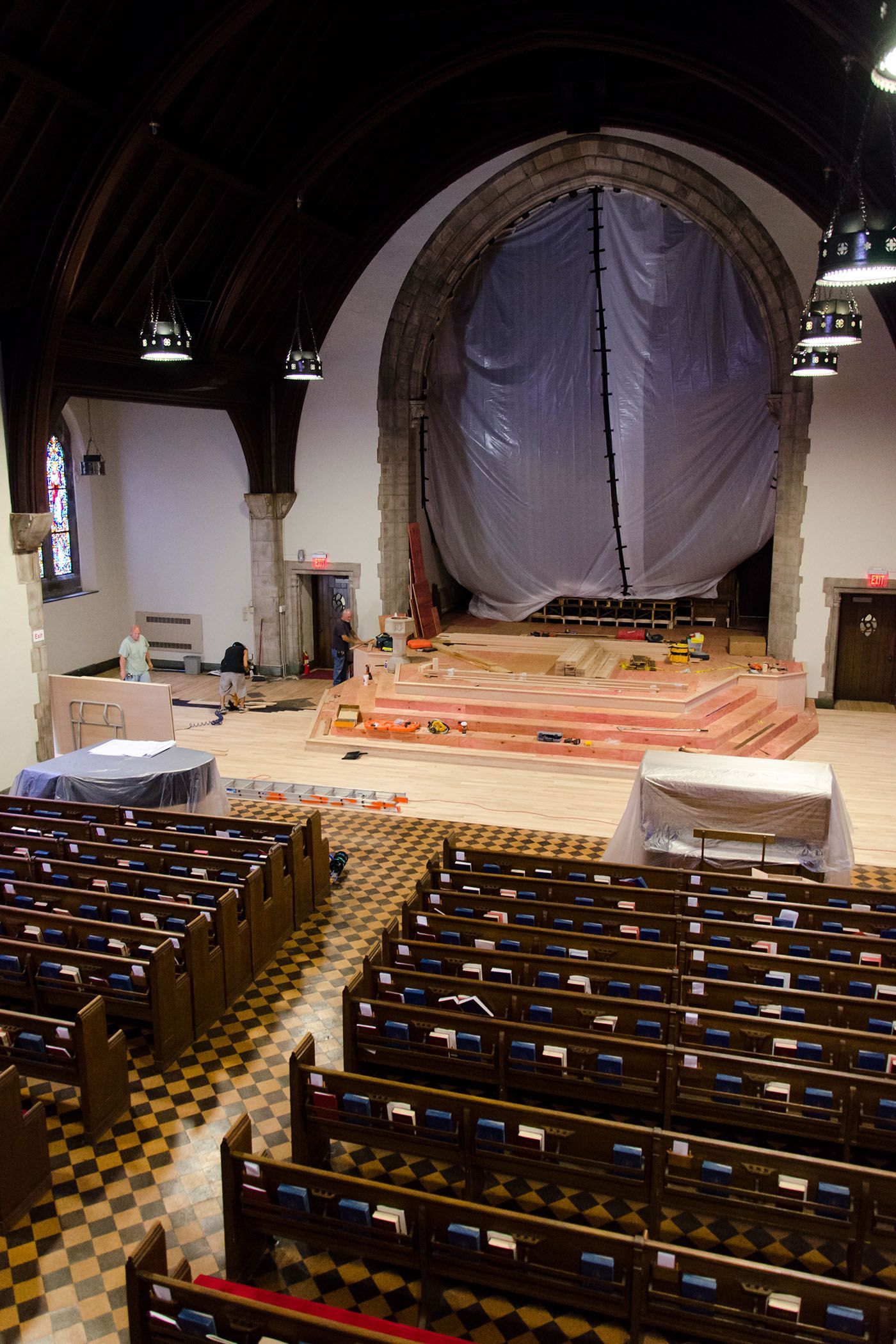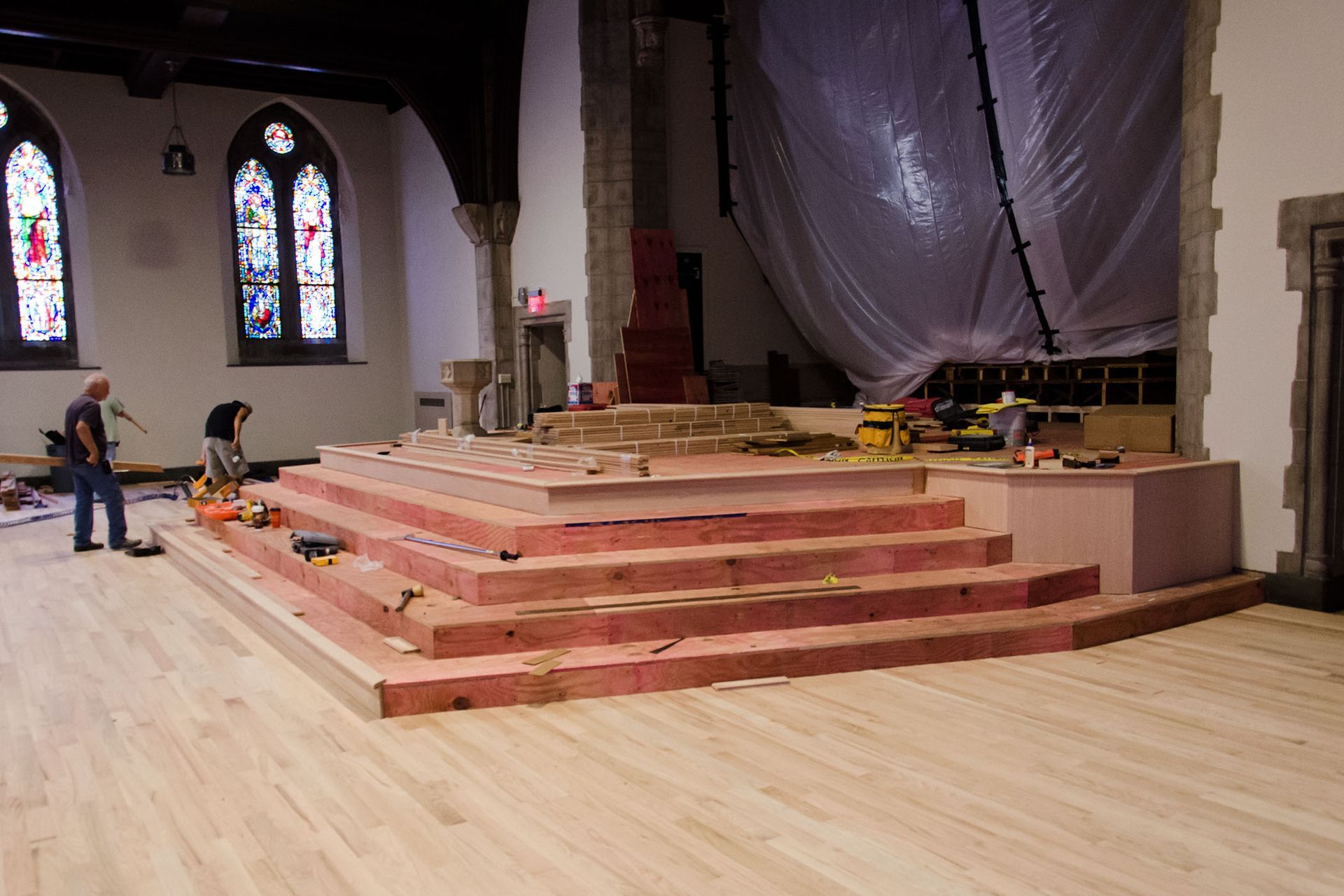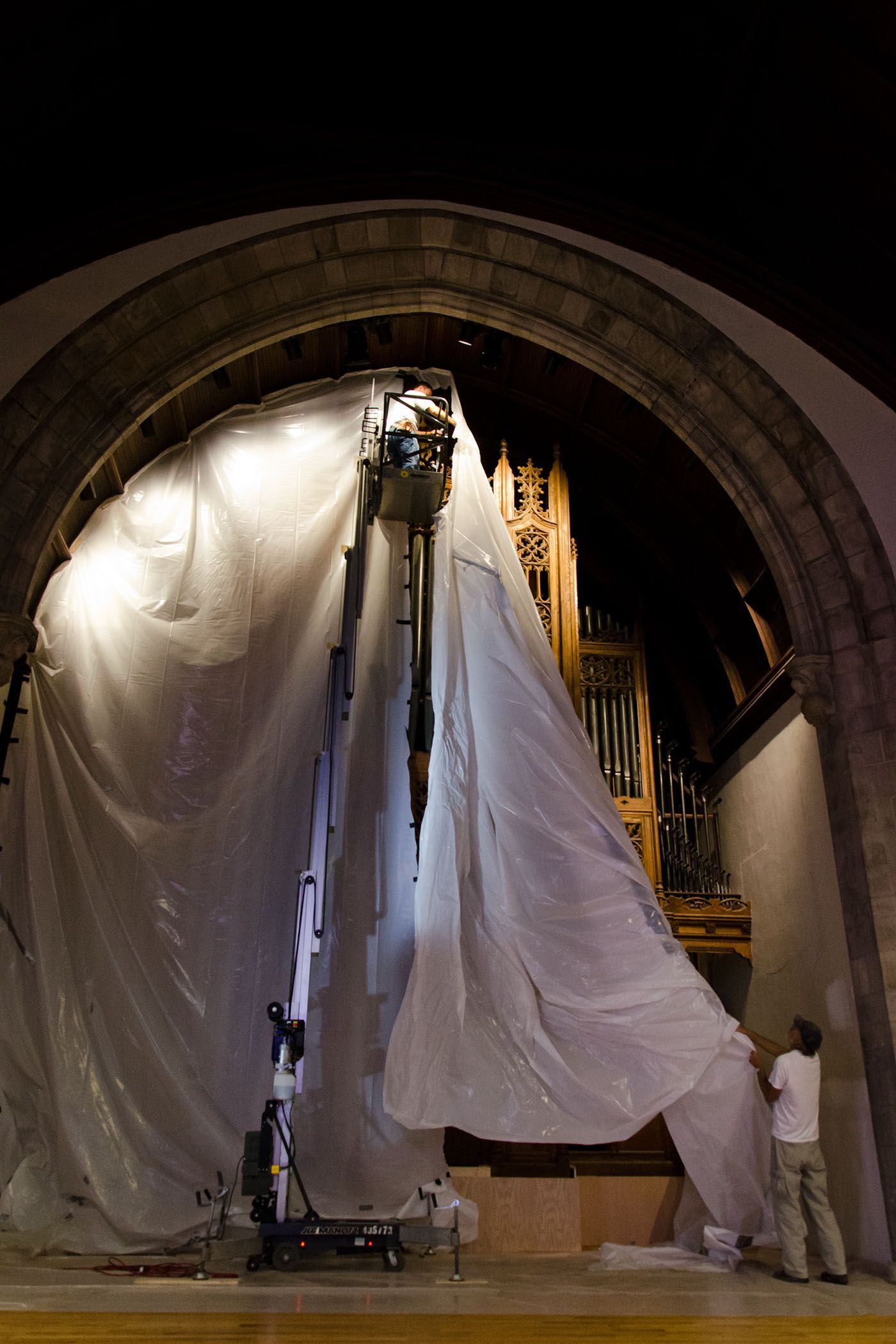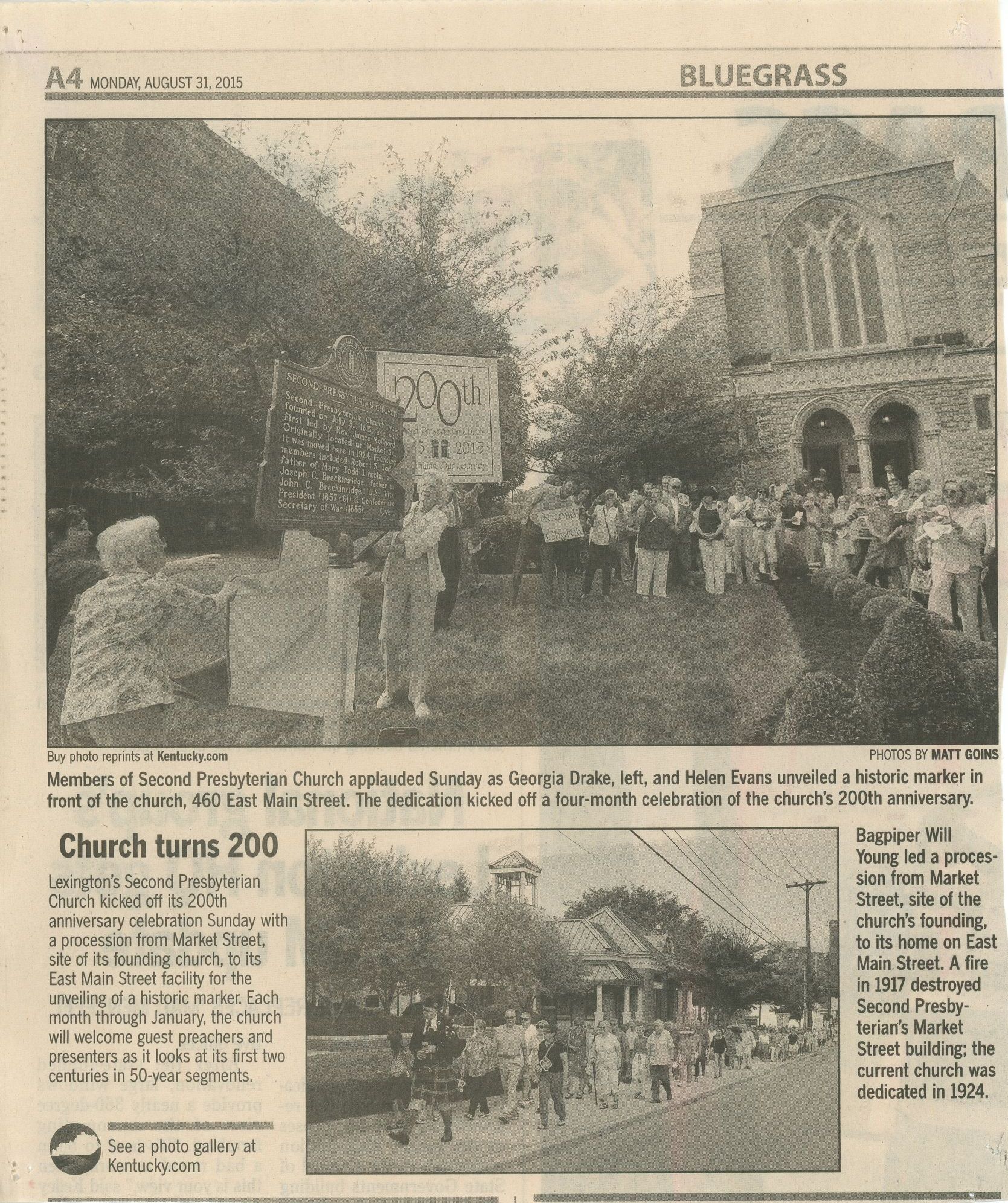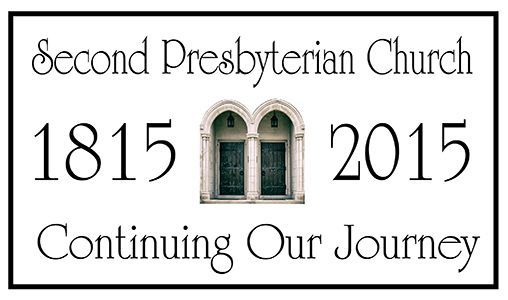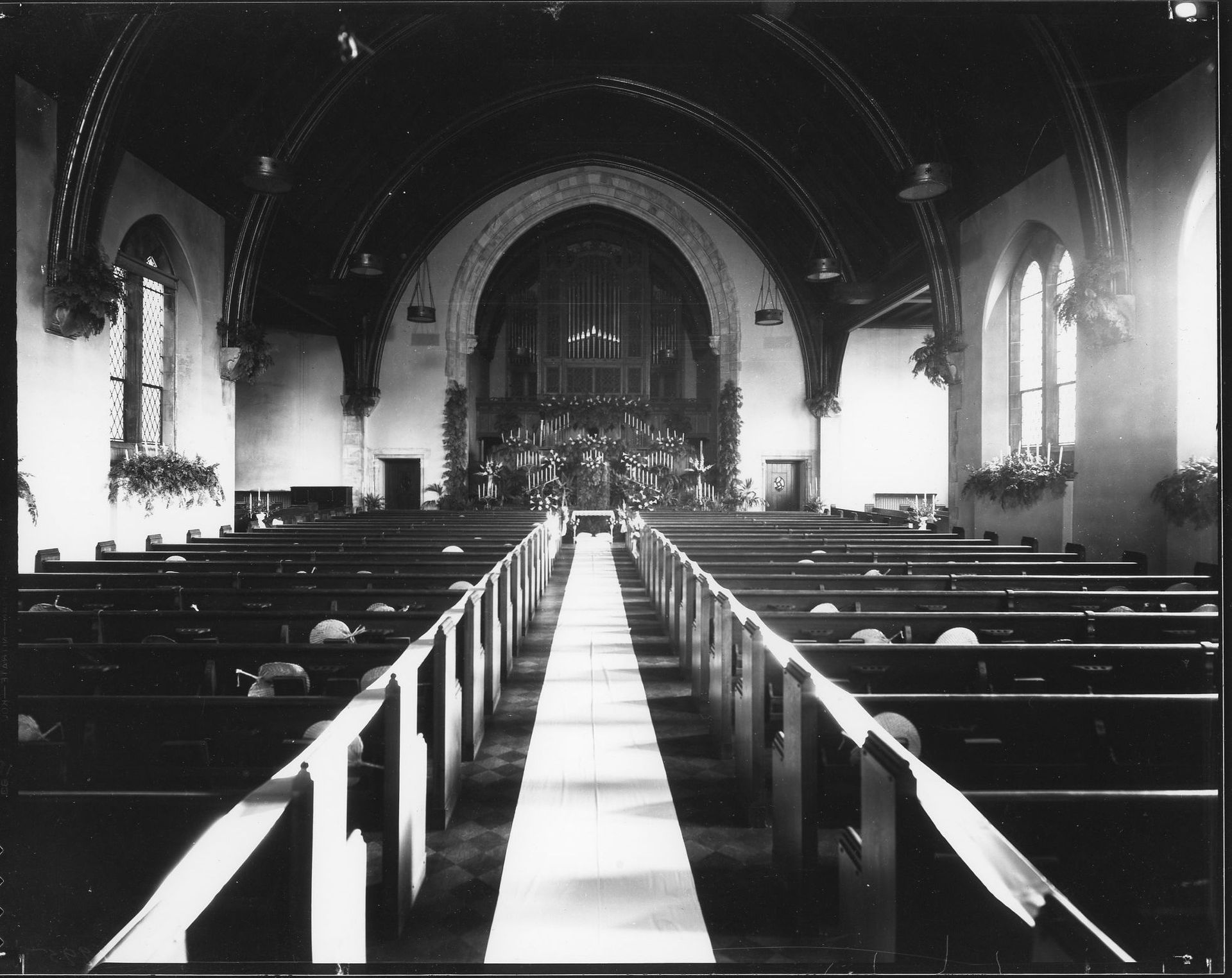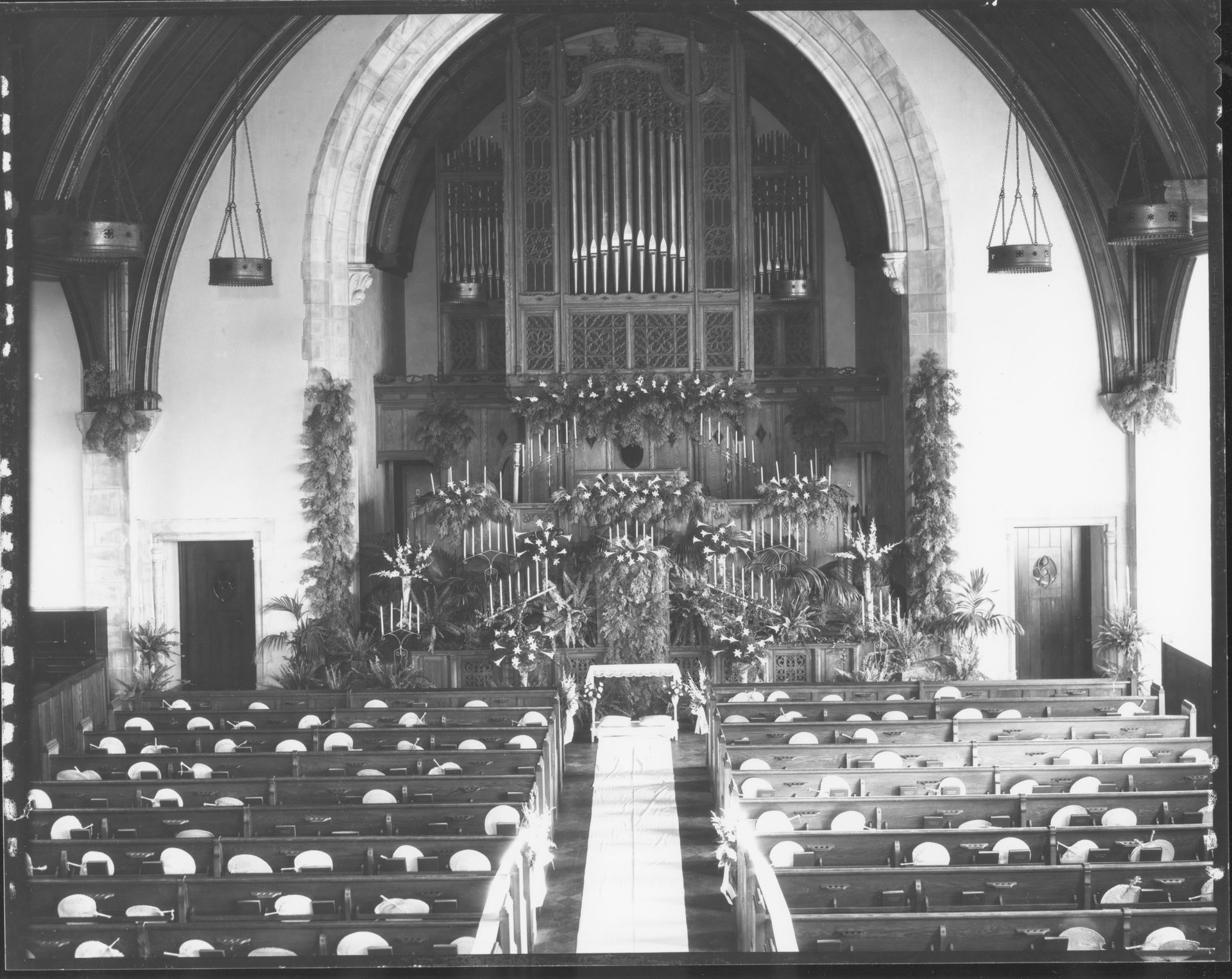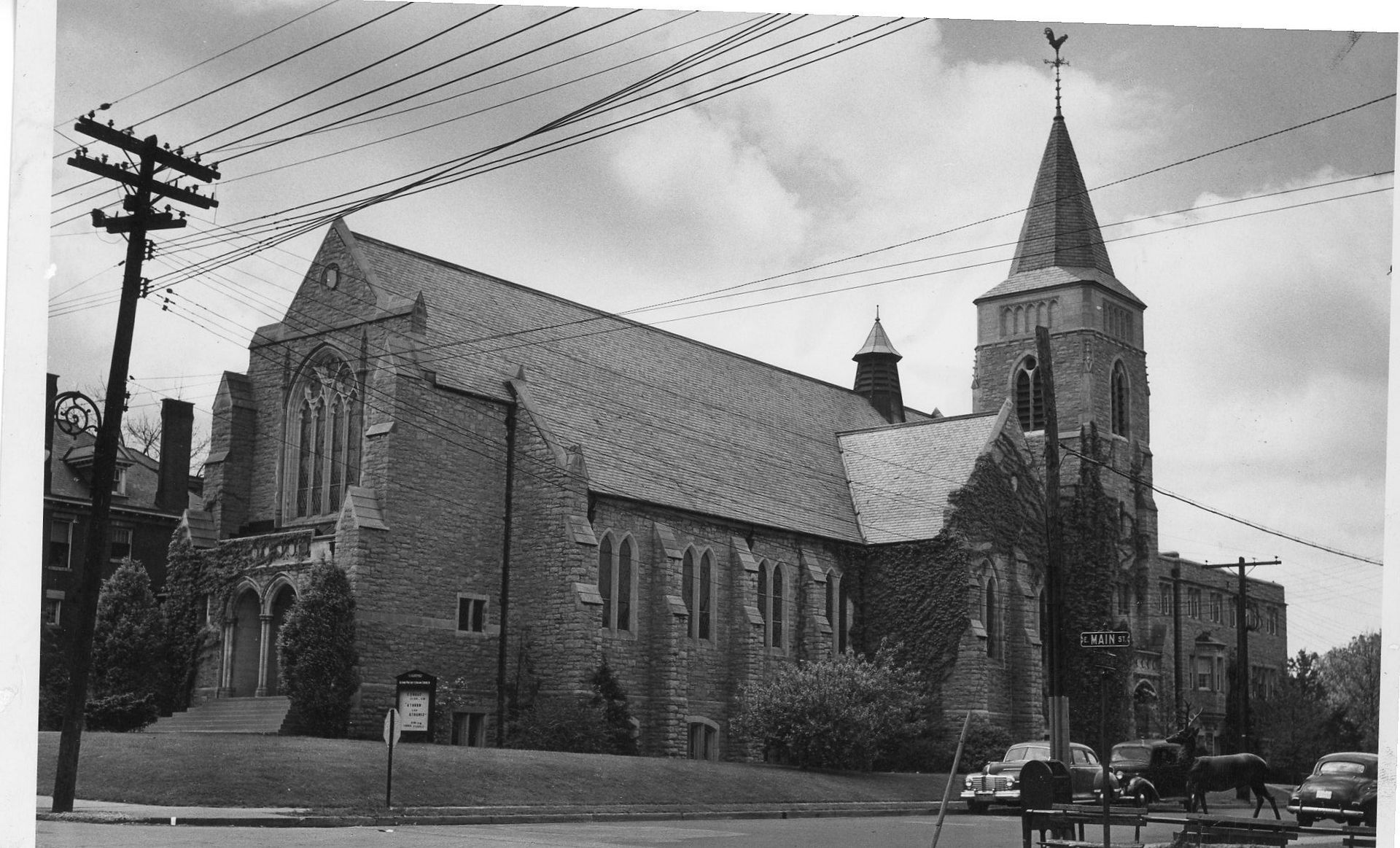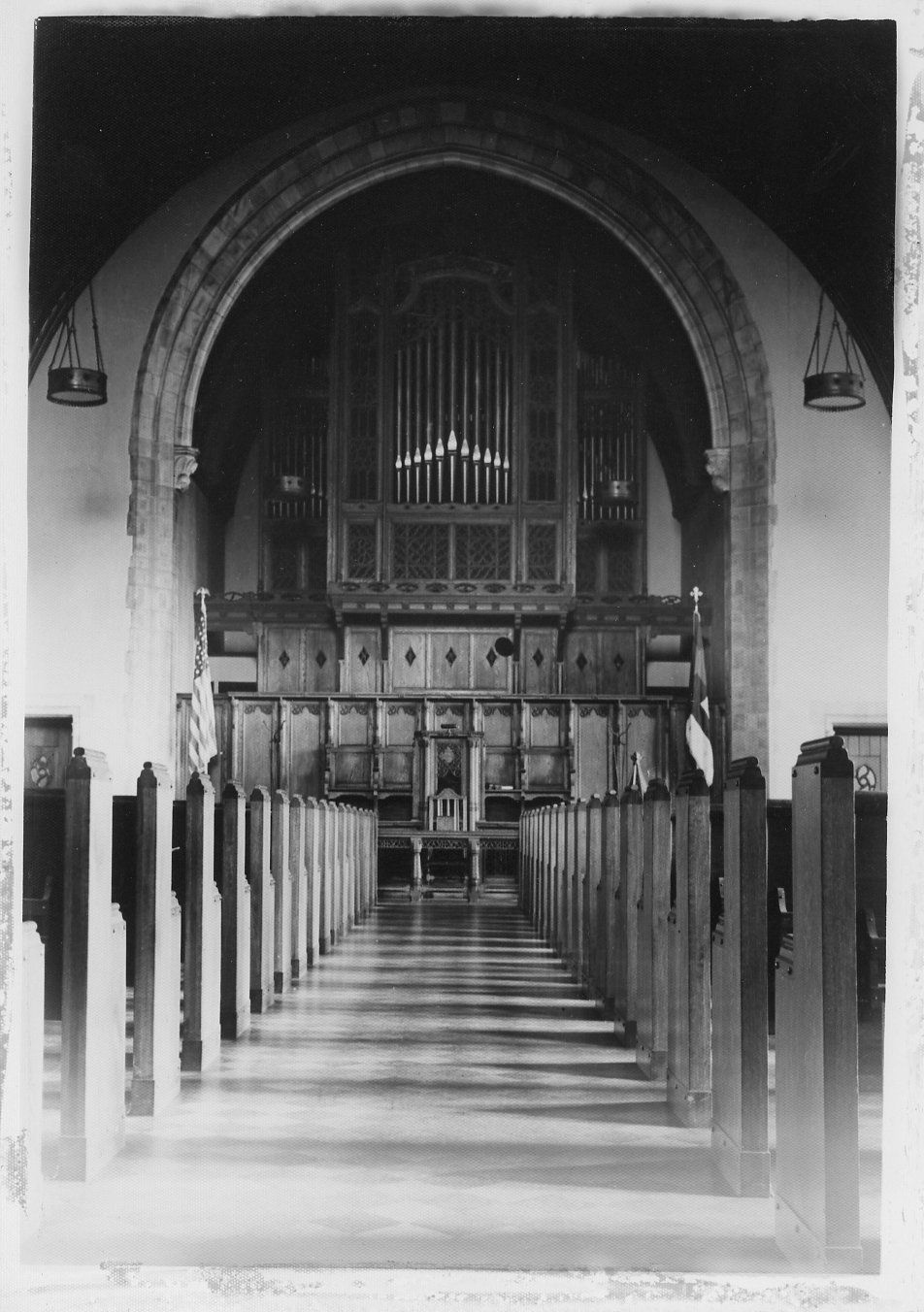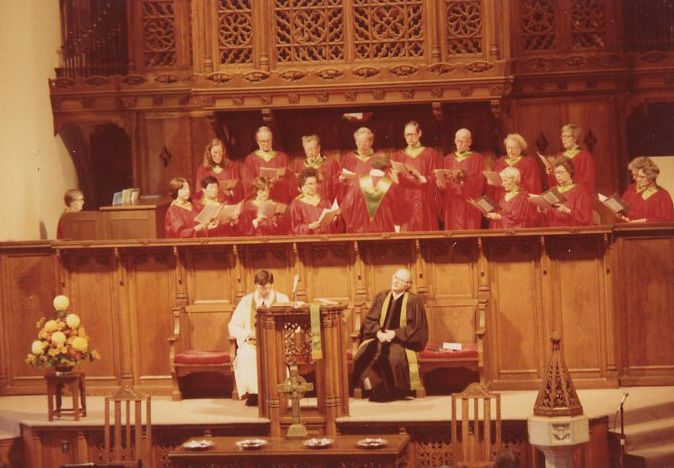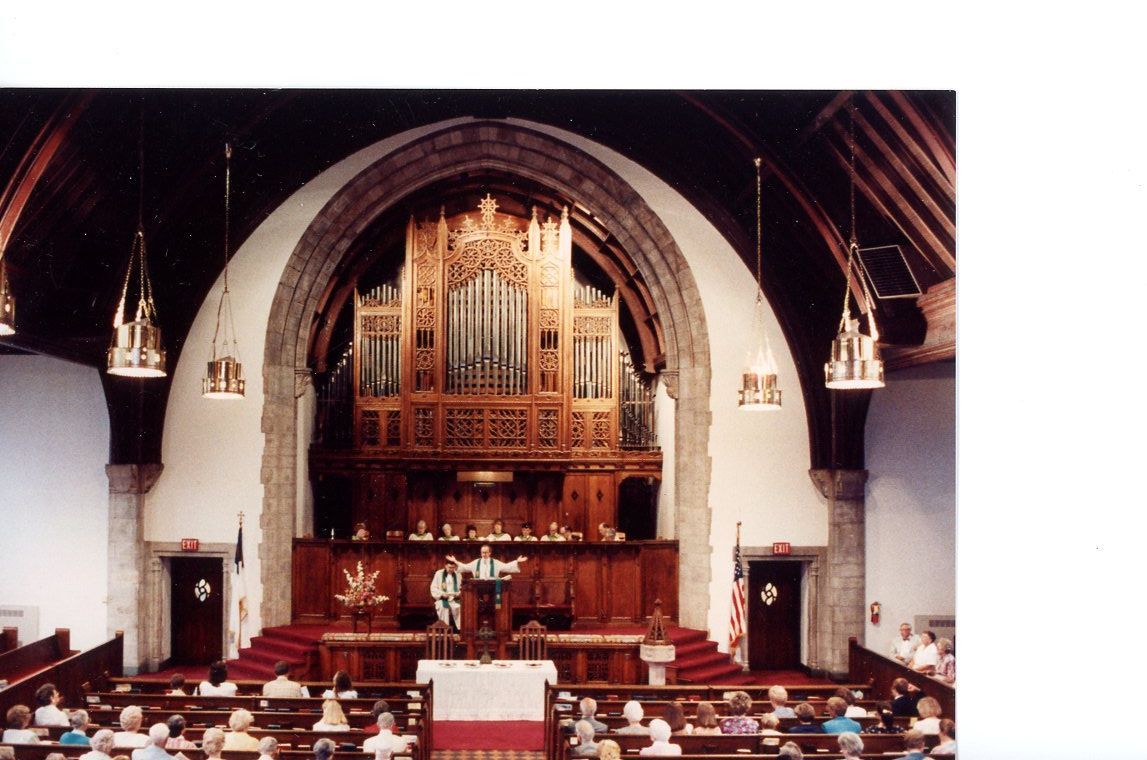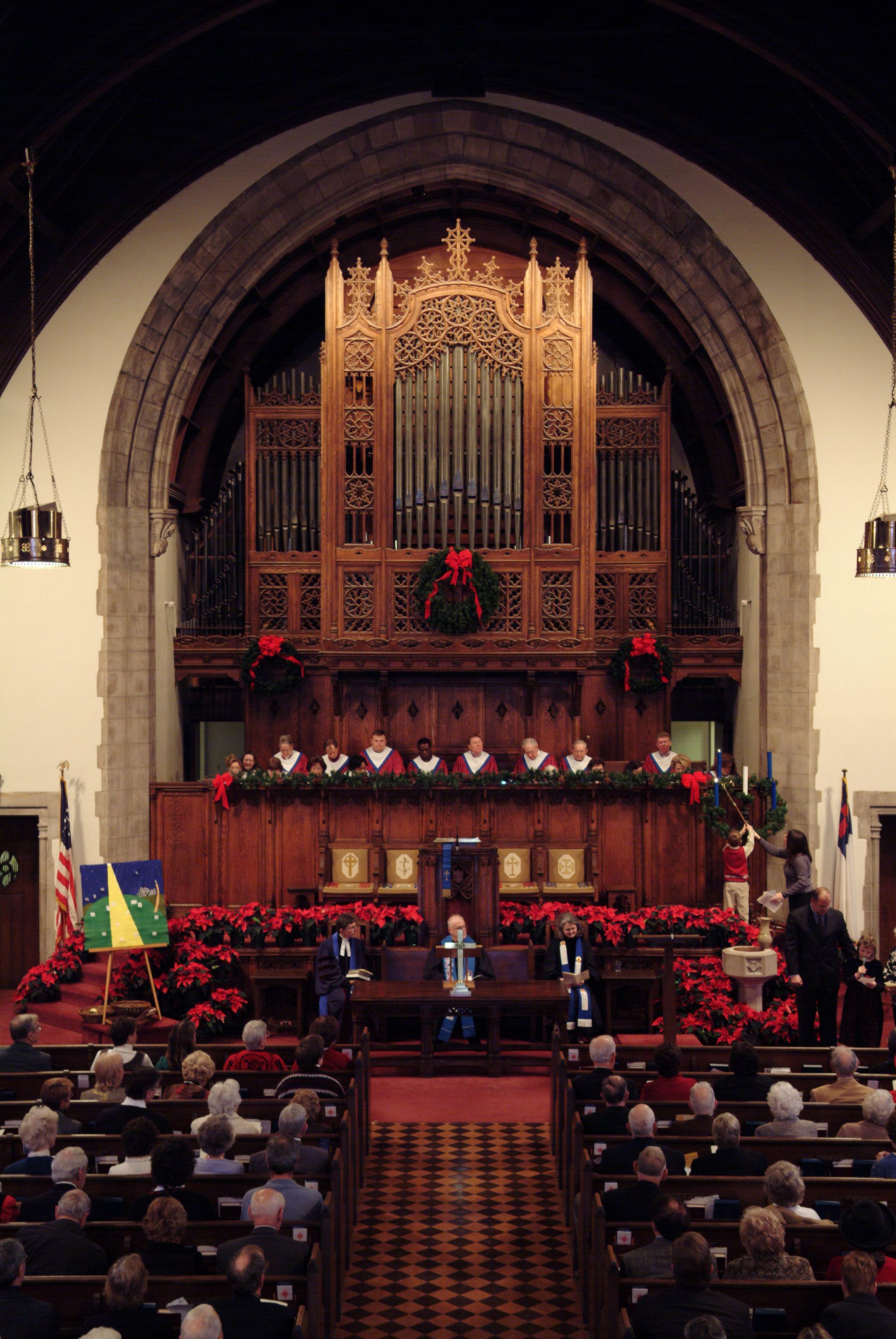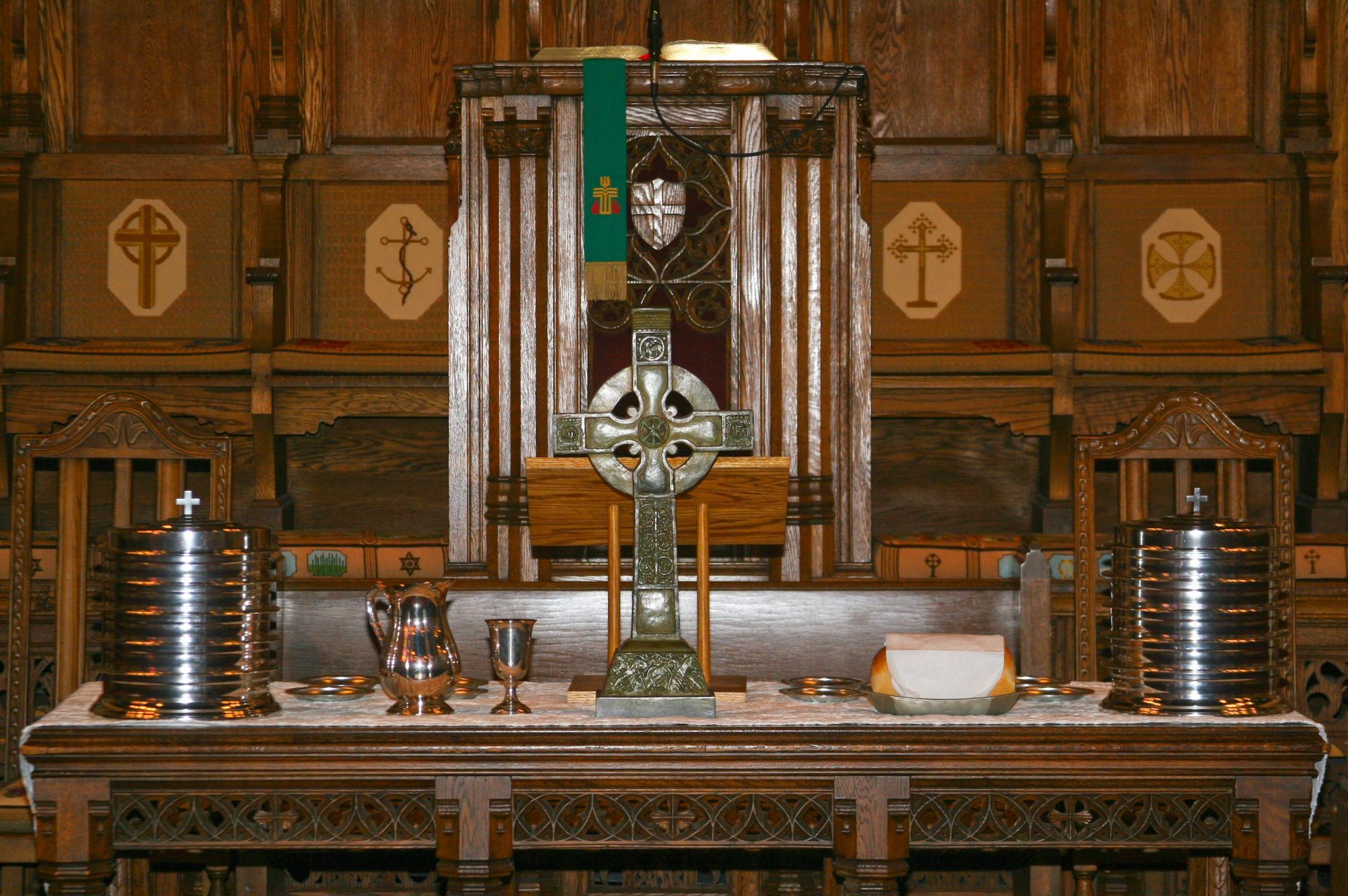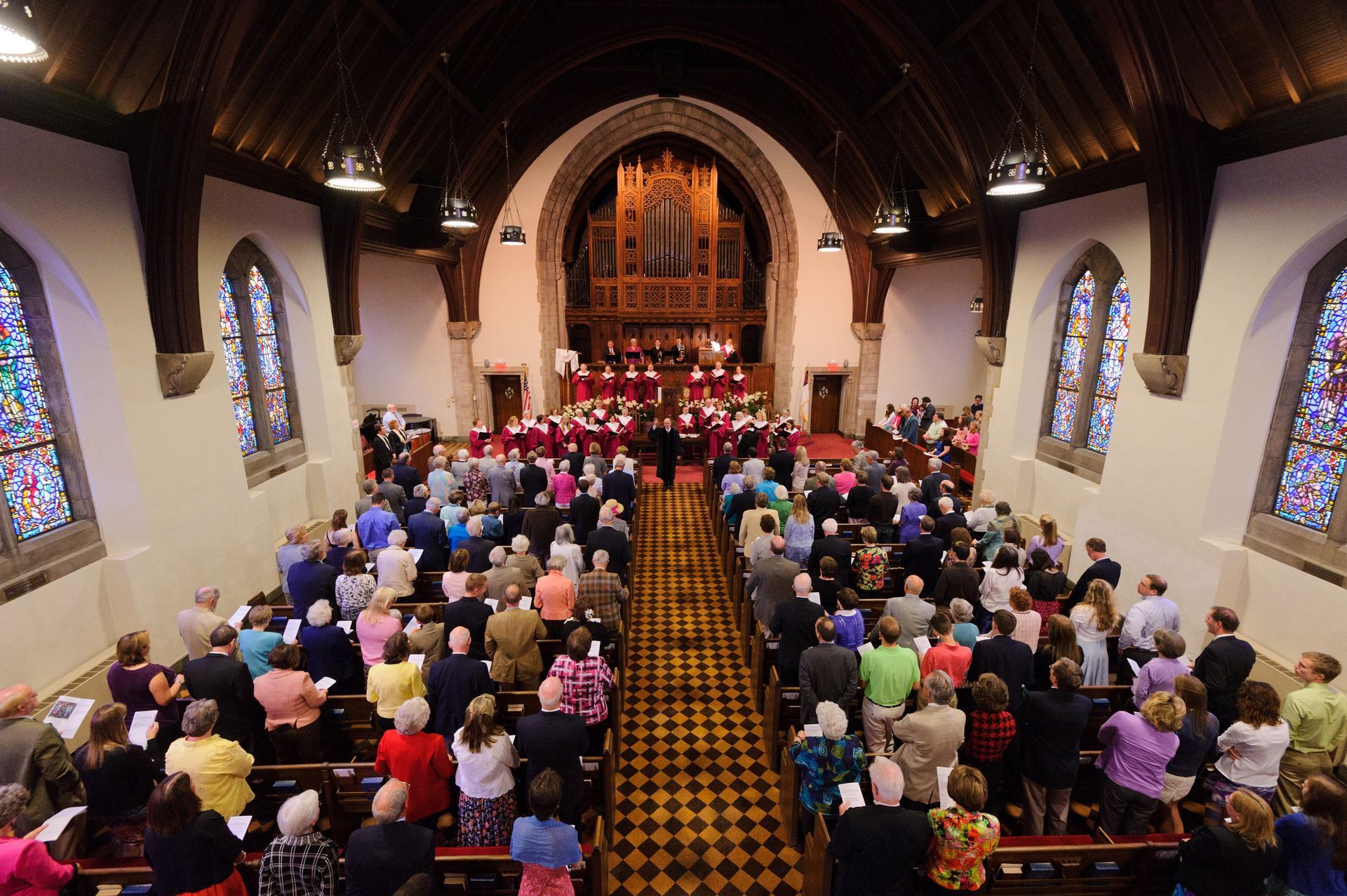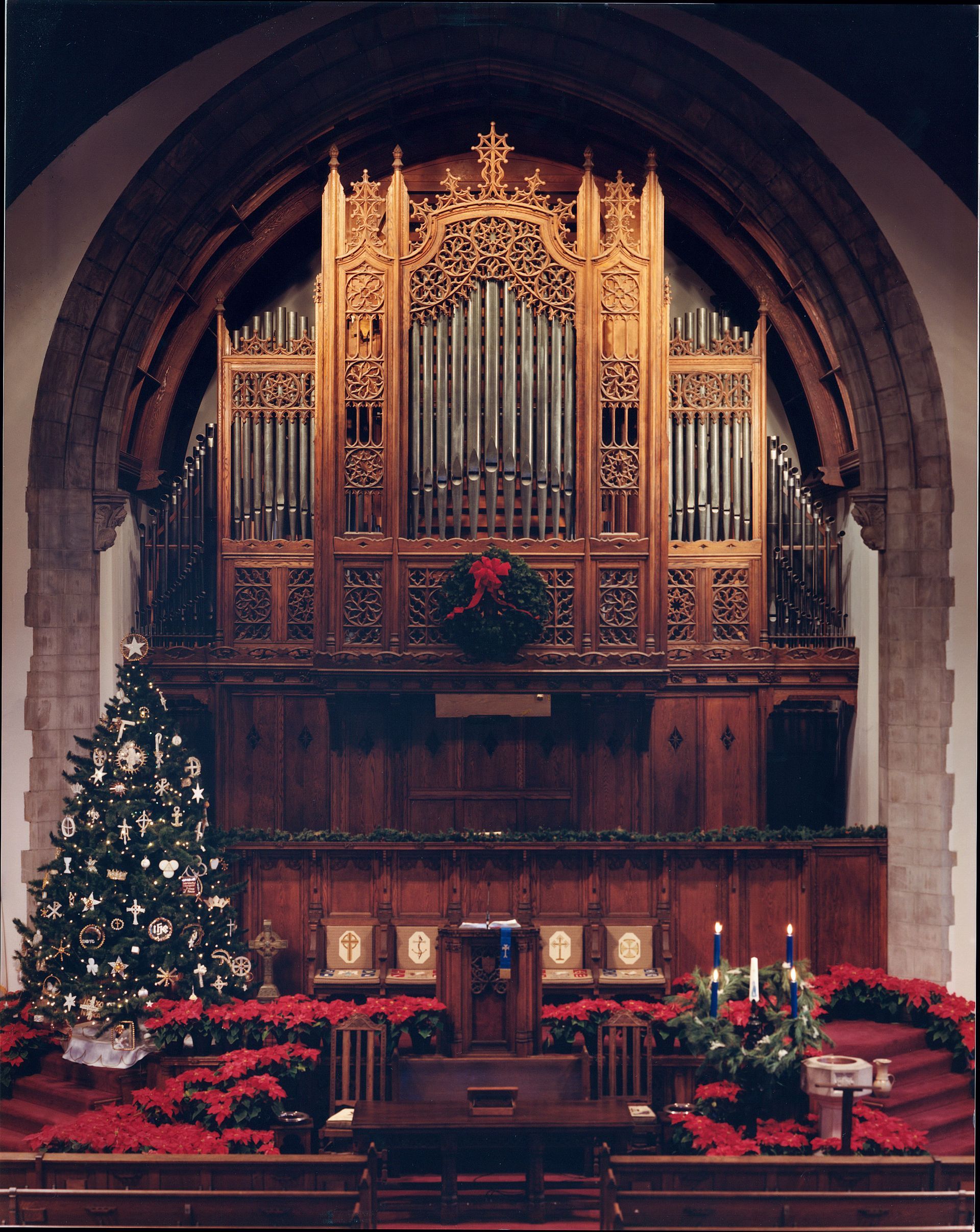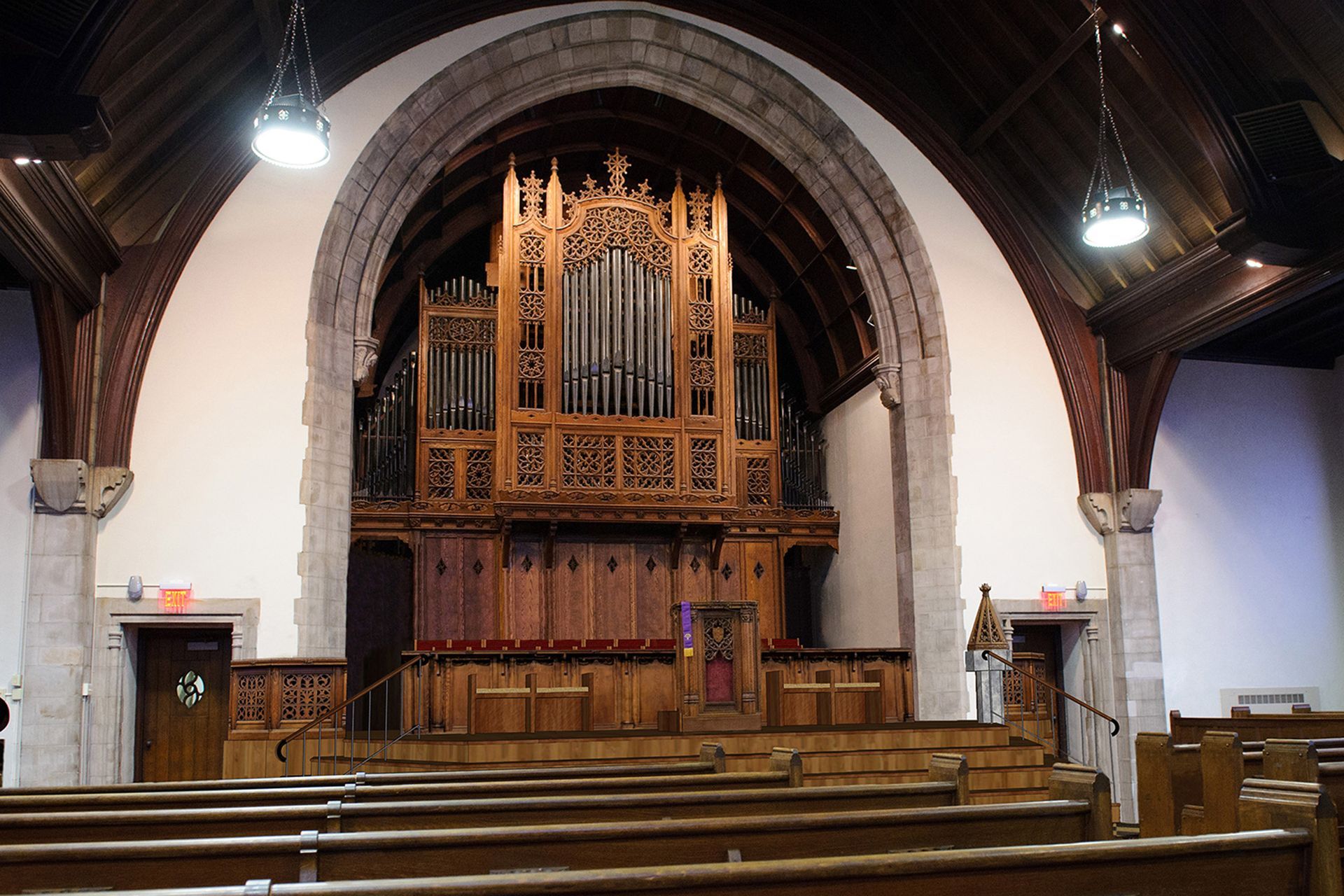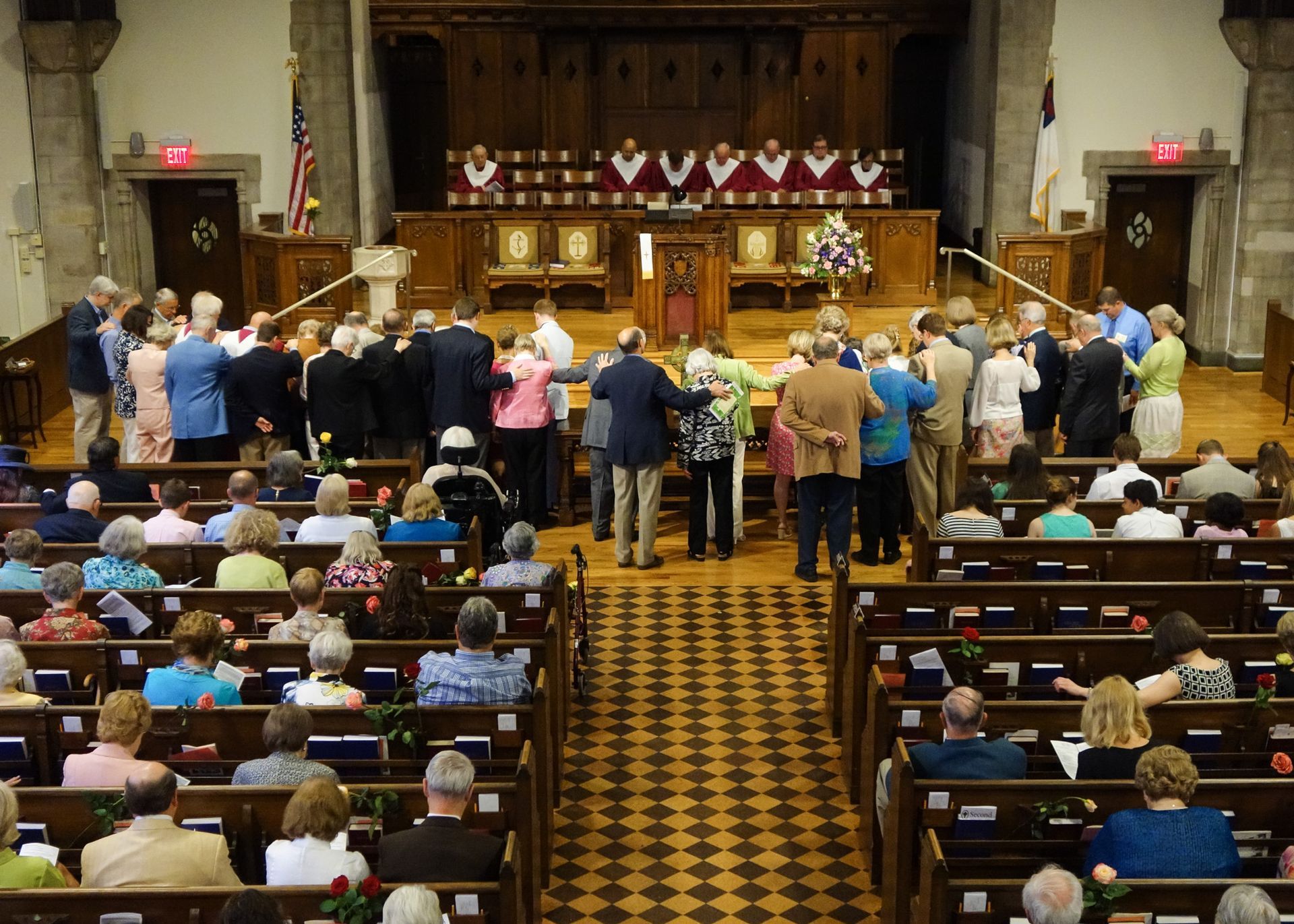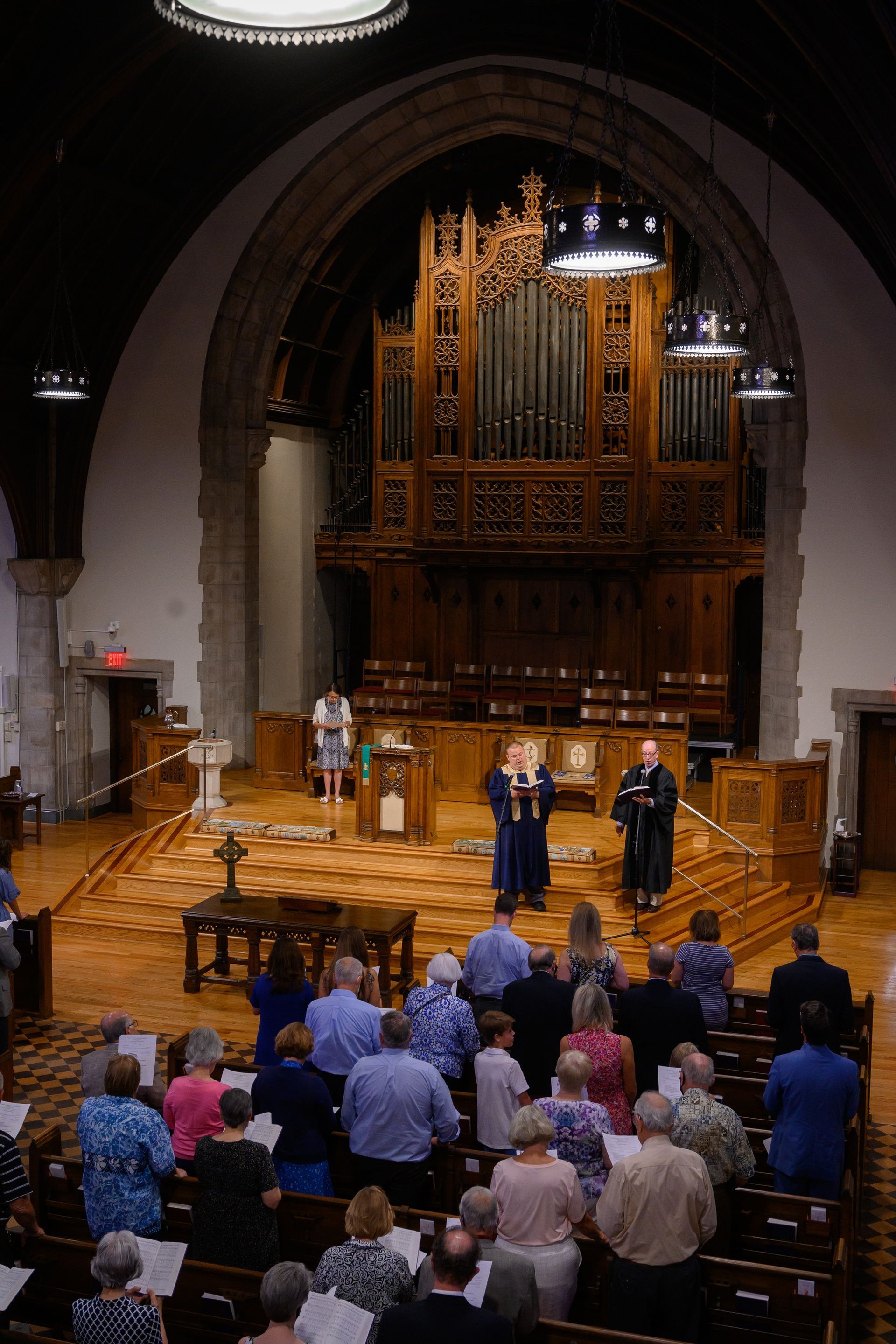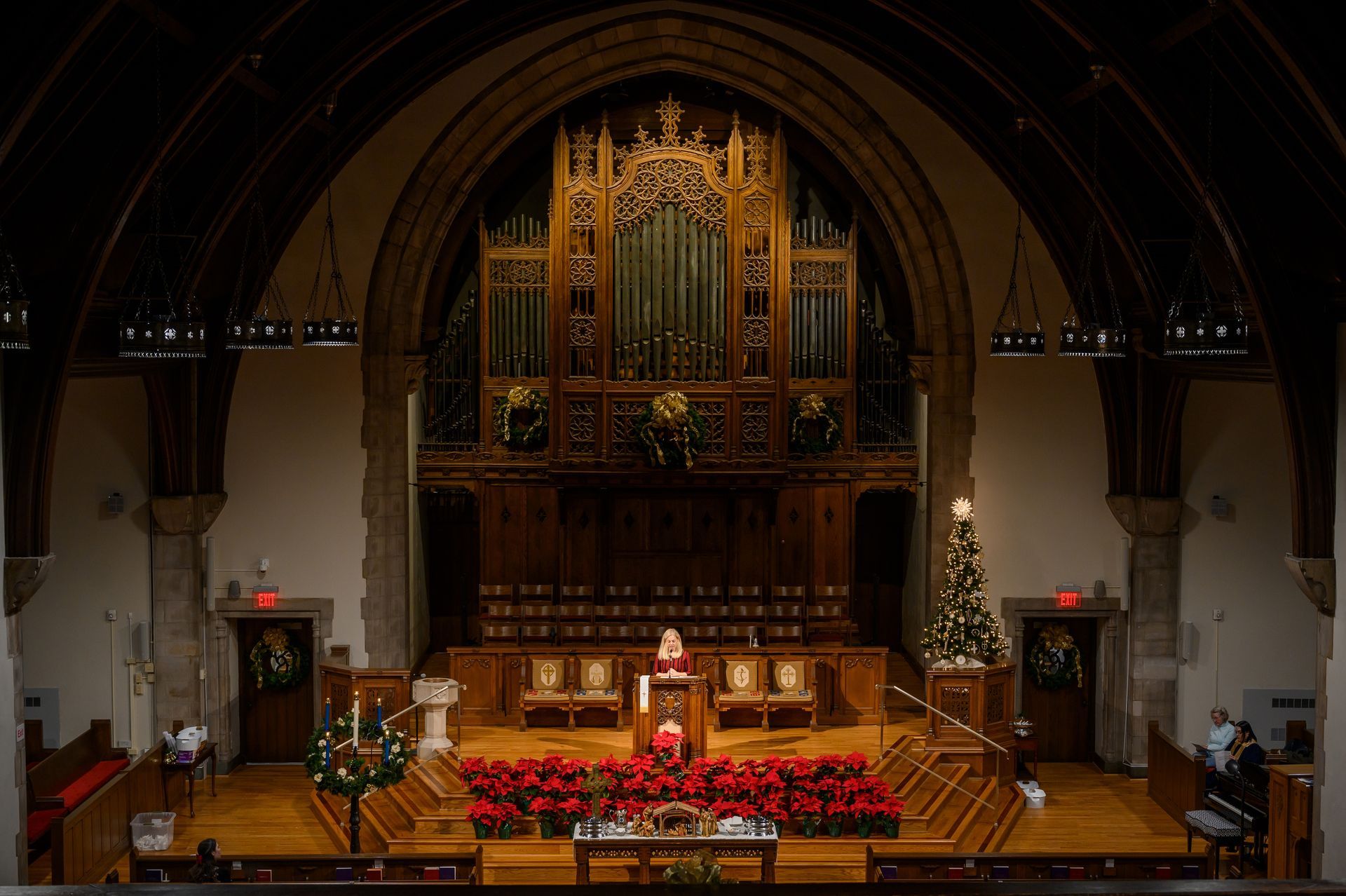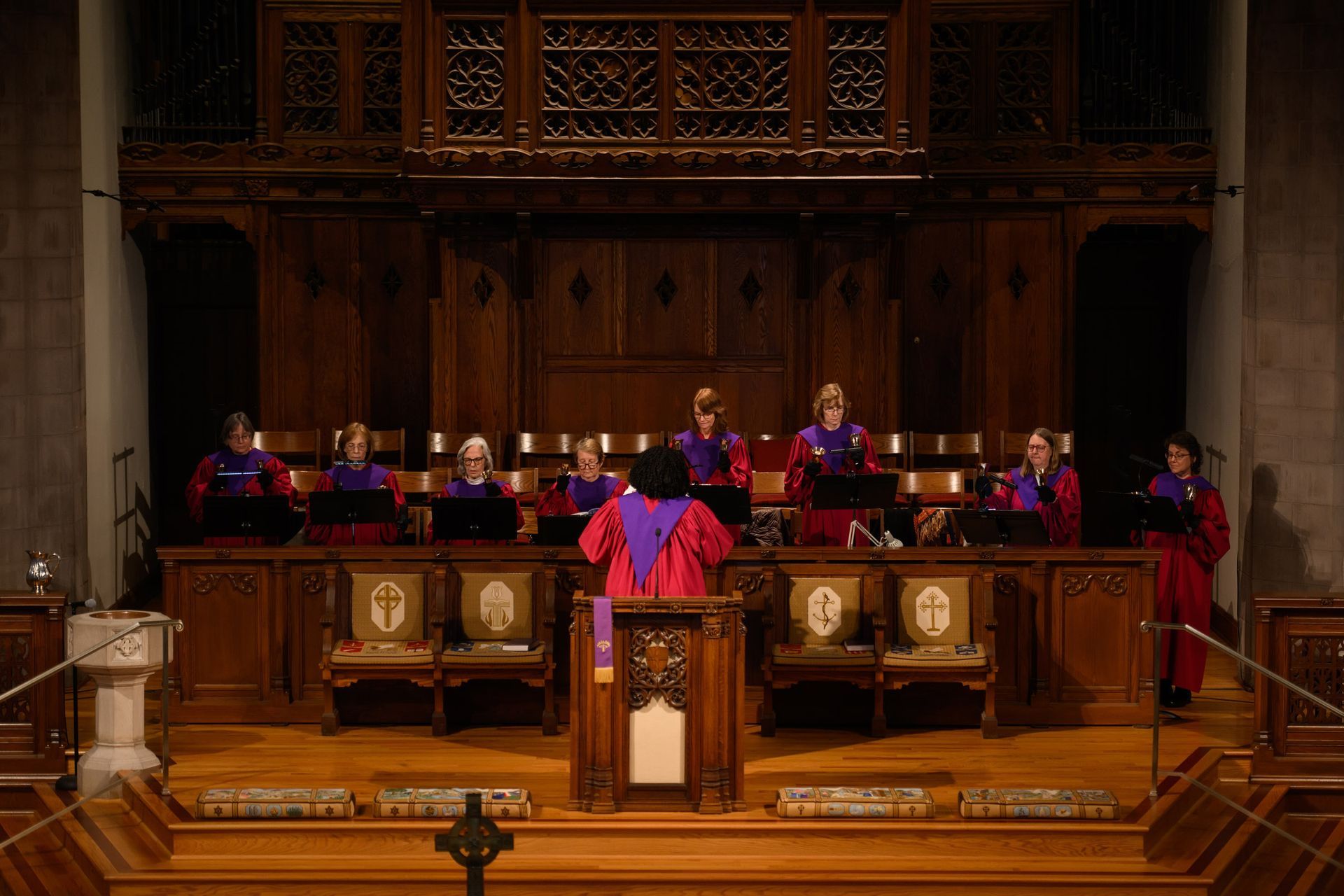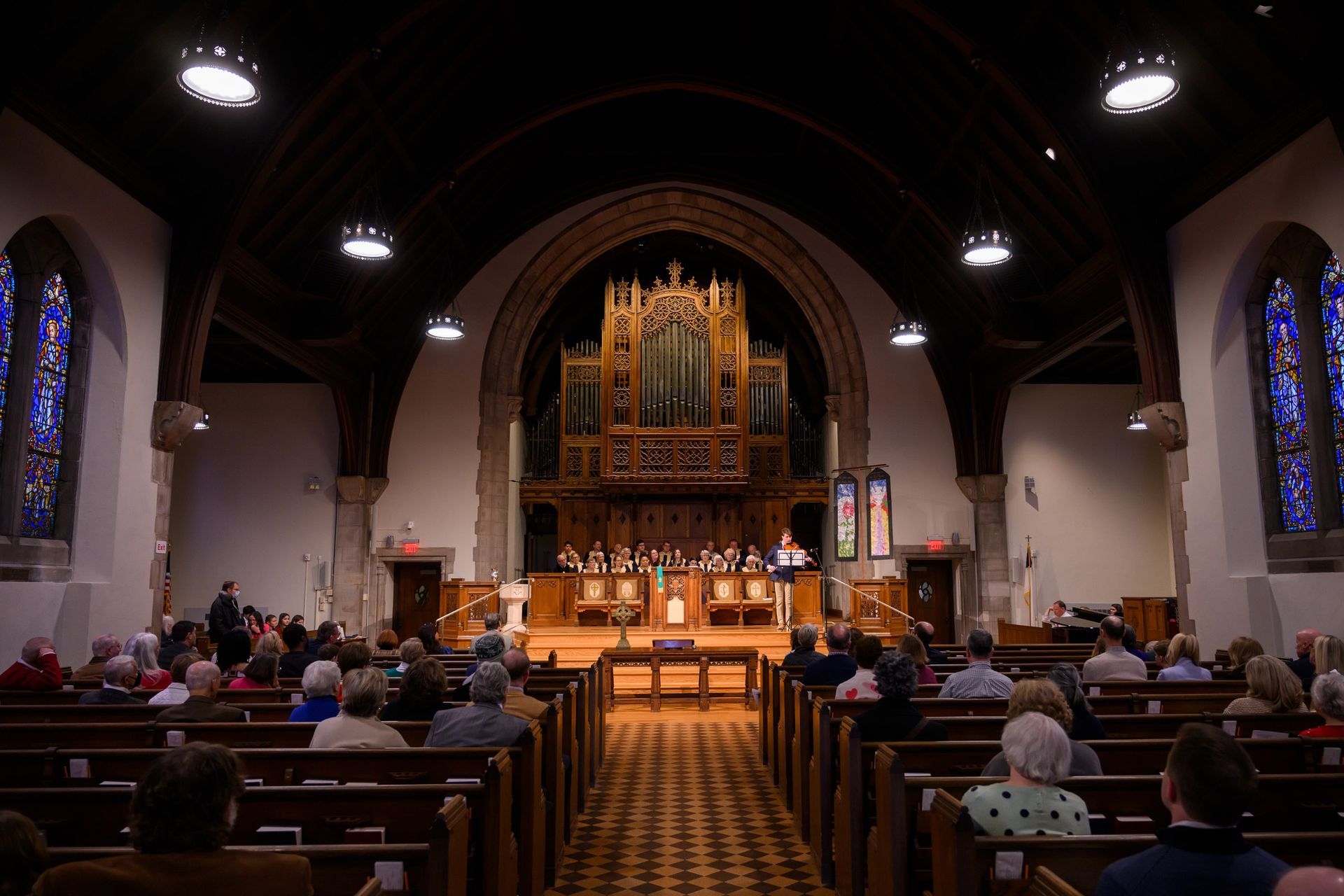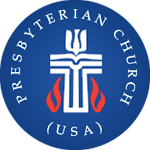History of Second Presbyterian Church
1813-1820
The Early Years
In 1813, at the Main Street, Lexington, residence of Dr. T.S. Bell, a young minister named James McChord preached a series of sermons. Preaching in a home in this way was against the by-laws of the Associate Reformed Presbyterian Church of which McChord was a member. Due to the conflict that these sermons caused, McChord decided to leave Lexington, a decision that was not to be implemented because of widespread support from those who had attended the services at the Bell residence. Many of these people were among Lexington’s most influential citizens, and together they decided that their church would function independently of the Associate Reformed Presbyterian Church until the conflict with the denomination could be resolved. These individuals included R obert Smith Todd, father of Mary Todd Lincoln, Joseph Cabel Breckinridge, father of Vice President John C. Breckinridge, General Thomas Bodley, General Leslie Combs, Farmer Dewees, Matthew Kennedy, John McChord, father of James McChord, George Norton, Governor John Pope, and James Morrison.
The congregation became known as the Market Street Church because its first building was located on Market Street. The building was dedicated on July 30, 1815, with James McChord as Pastor and fifteen communicant members. It remained an independent church until 1818, when McChord resigned from the Associate Reformed Presbytery, and both he and the congregation joined the West Lexington Presbytery. The church now became the Market Street Presbyterian Church.
McChord remained with the church full time until 1819. During these years two important difficulties arose in the ministry.
The first was economic. The end of the War of 1812 brought about a national economic recession. This created a domino effect for the Market Street Church. The recession impacted the Lexington business community, reducing the financial support of members for the small church, and forcing it into financial difficulties. As a result, McChord could no longer support his family on the small salary he was receiving as Pastor.
The second problem McChord faced concerned the true commitment of the congregation to the cause of Christ. McChord’s preaching style was appealing to many, but when he began emphasizing redemption and commitment on an ongoing basis, some of the people became uncomfortable and withdrew their support.
McChord continued to serve the church part-time until his death in 1820, at the age of 35. He had been elected in 1820 as the first President of Centre College in Danville, Ky., but died before he was installed. His funeral was held at the Market Street Church and he was interred in a crypt beneath the pulpit. McChord’s grave remained at the Market Street location until 1924, when he was interred in the Lexington Cemetery.
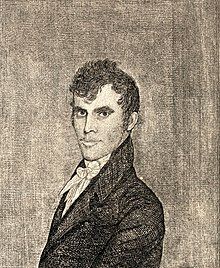
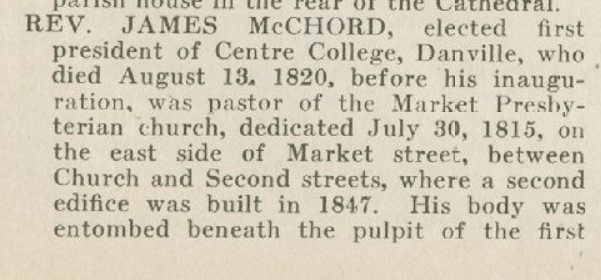
1820-1860
The Church Develops
Following McChord’s death, the Market Street Presbyterian Church continued to prosper. In 1823, the church organized a Sunday School, believed to be the first such school in Lexington. That same year, the church was renamed the McChord Presbyterian Church, in honor of the late founding pastor. In 1828, feeling that it was inappropriate to name a church after an individual, the church was given its current name of Second Presbyterian.
Under the leadership of a succession of strong pastors, Second Church continued to grow. In 1846, when the Rev. Dr. John Howe Brown was installed as pastor, the church had 168 members. Dr. Brown was one of Kentucky’s great pulpit orators and the original building soon proved itself too small for the crowds, which averaged around 300, that attended. The building was razed and a larger structure was built on the same site. The new building was dedicated on October 31, 1847, and contained a sanctuary that had a seating capacity of around 700. Several weeks after the dedication, Mary Todd and Abraham Lincoln attended Thanksgiving services in the new sanctuary. The future president and his wife were in Lexington visiting her family. Rev. Brown remained at Second until 1853. In 1857, Dr. Brown became the pastor at the First Presbyterian Church in Springfield, Illinois, the same church where the Lincolns attended services.
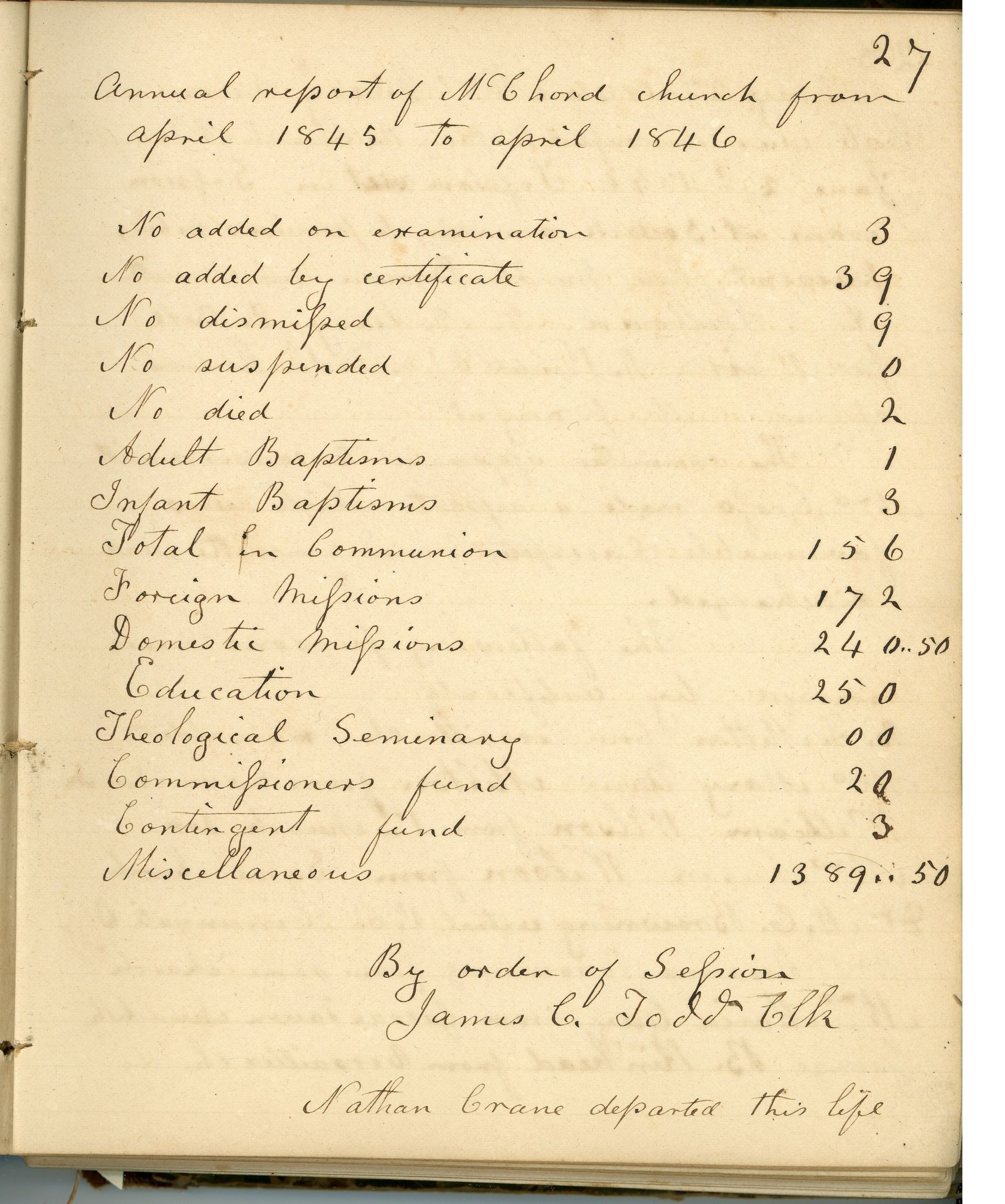
Annual Report of McChord Church
1845-1846
1860-1900
Division and Mission
Following the Civil War, the Presbyterian Church divided along regional lines, North and South. Second Presbyterian Church was the only local Presbyterian Church to affiliate with the Northern Presbyterian Church. The focus of Second Church following the division was that of local mission. During the remaining years of the 19th Century, the church membership grew to around 710 members which enabled Second Church to initiate various outreach projects. These included the formation of a Sunday School for African-American children, the building and operation of the Campbell Memorial Chapel in Irishtown, the Pastor’s Aid Society, and the organization of the Young People’s Society of Christian Endeavor.
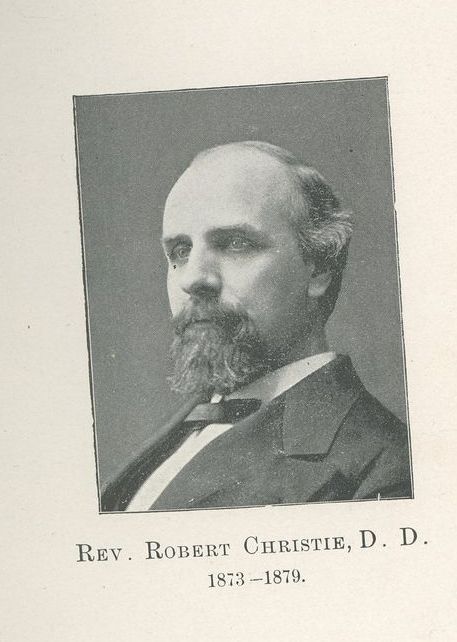
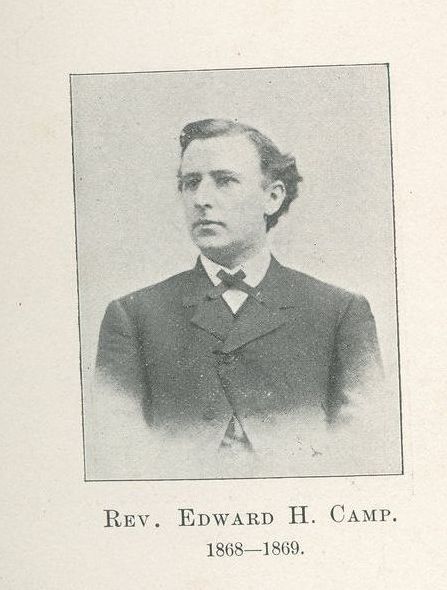
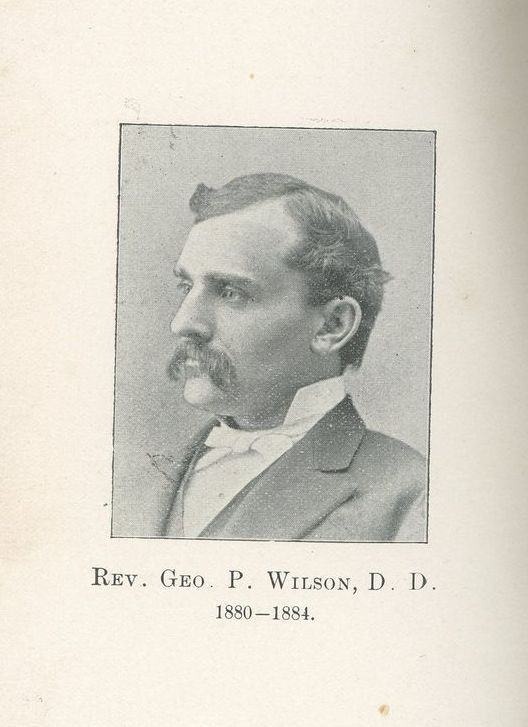
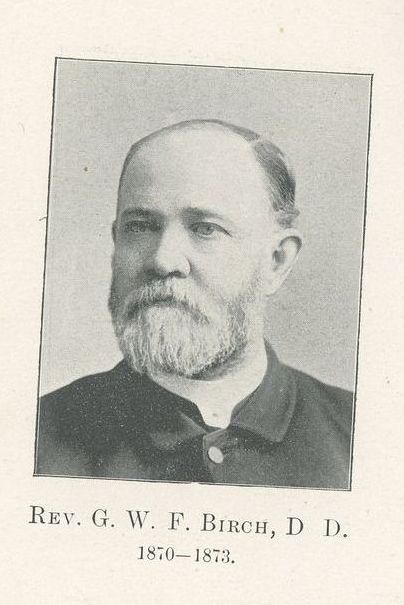
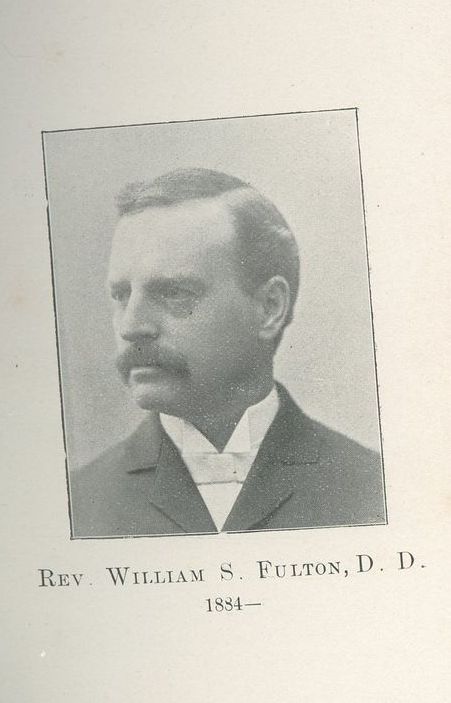
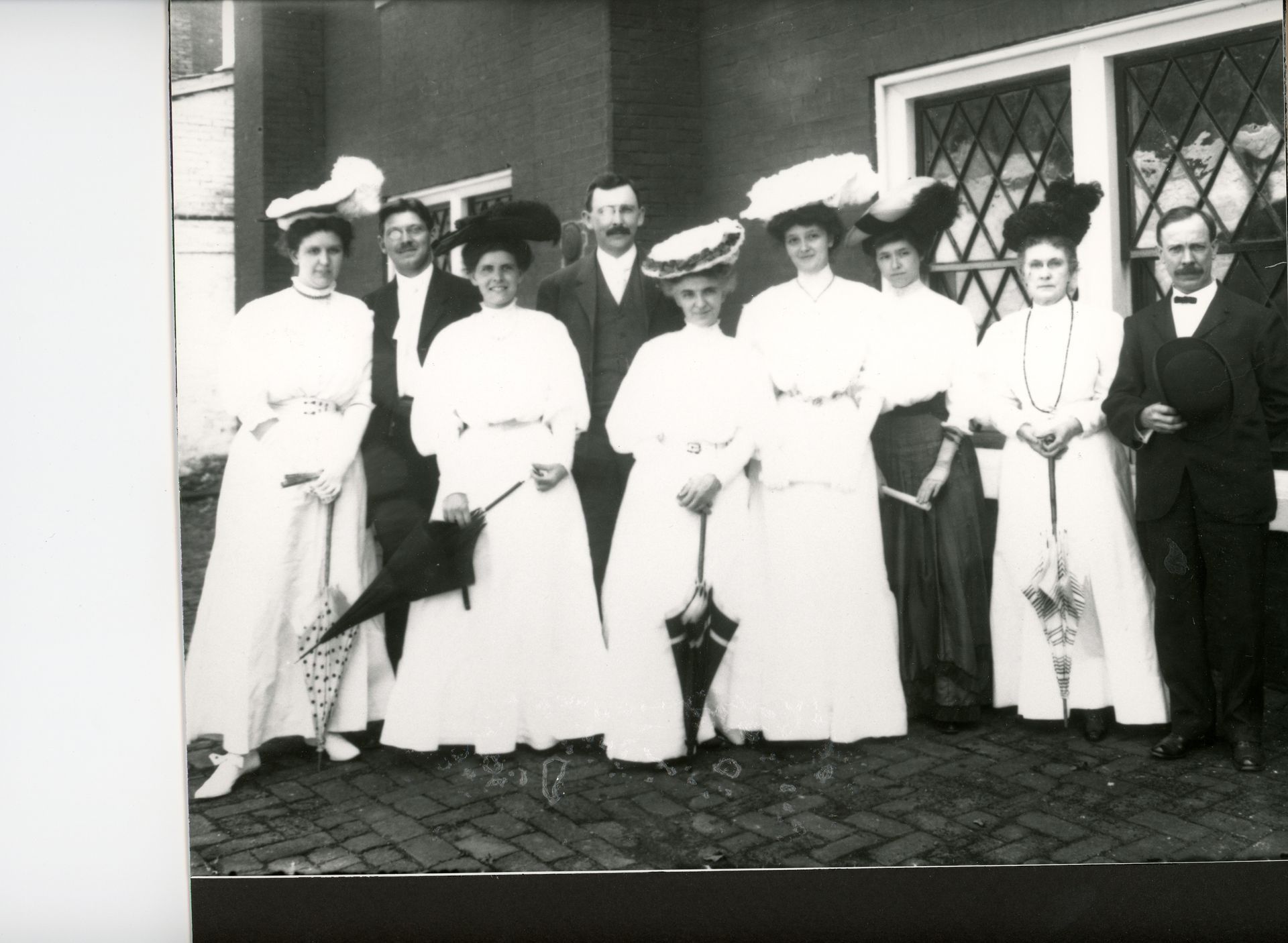
Second's Choir in the 1870s
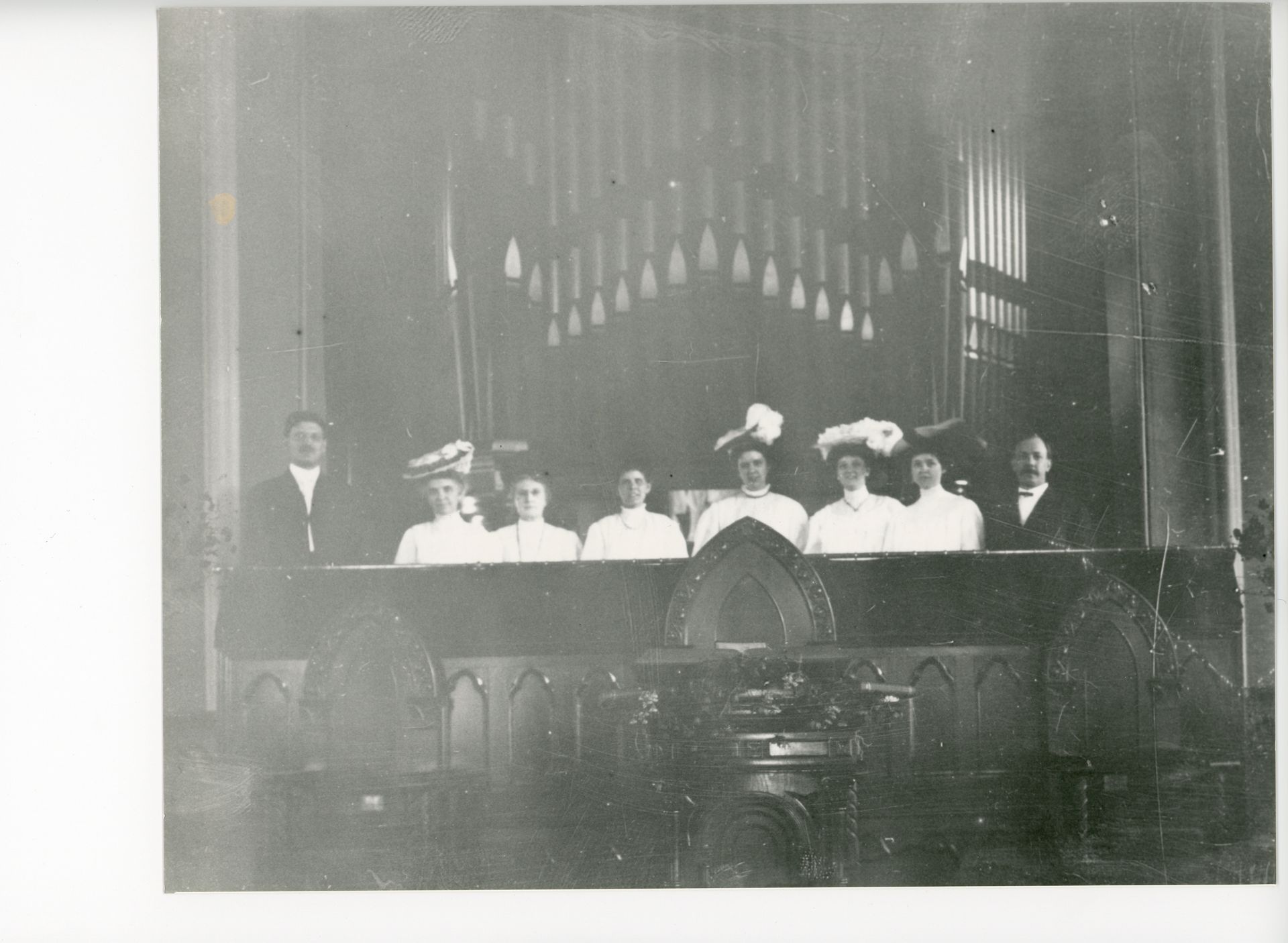
Second's Choir in the Sanctuary in the 1890's
1900-1950
Fire & A New Building
In 1915, Second Presbyterian celebrated its
One Hundredth Anniversary.
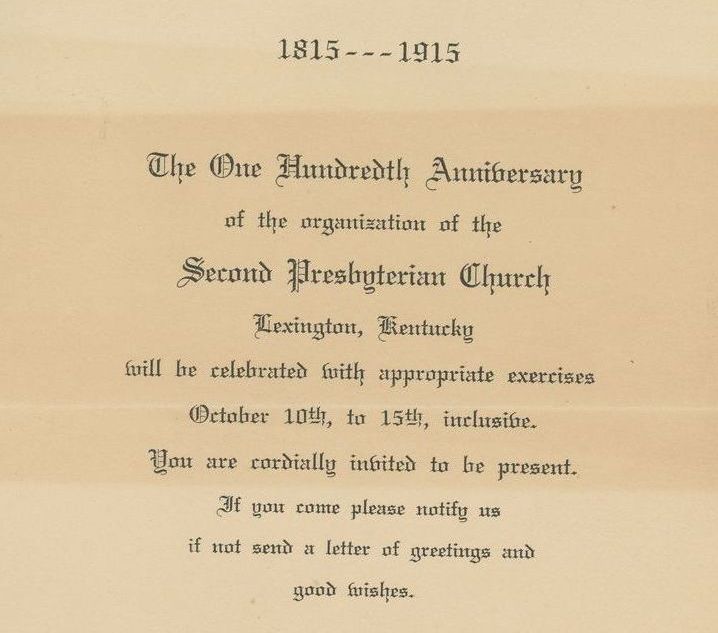
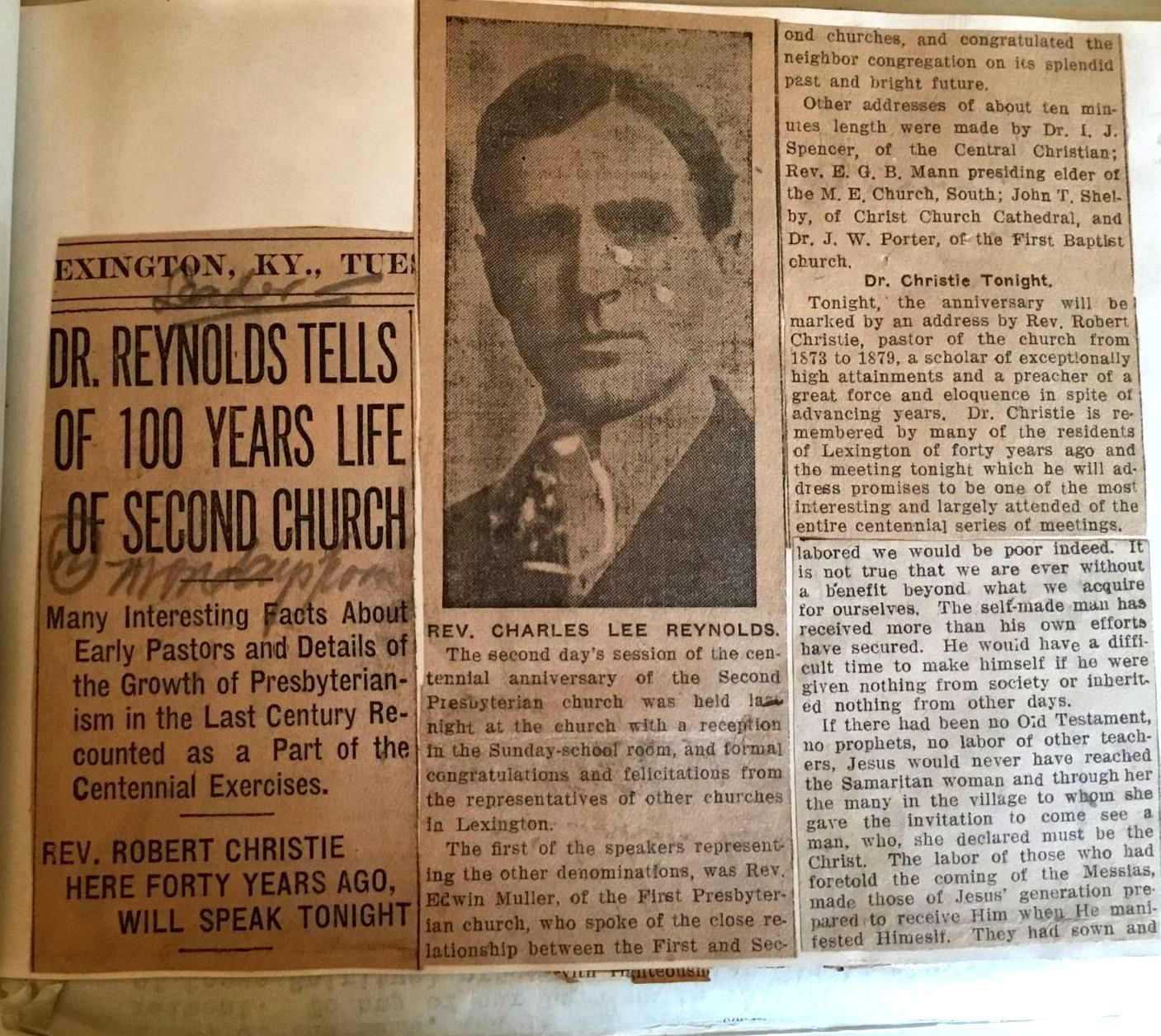

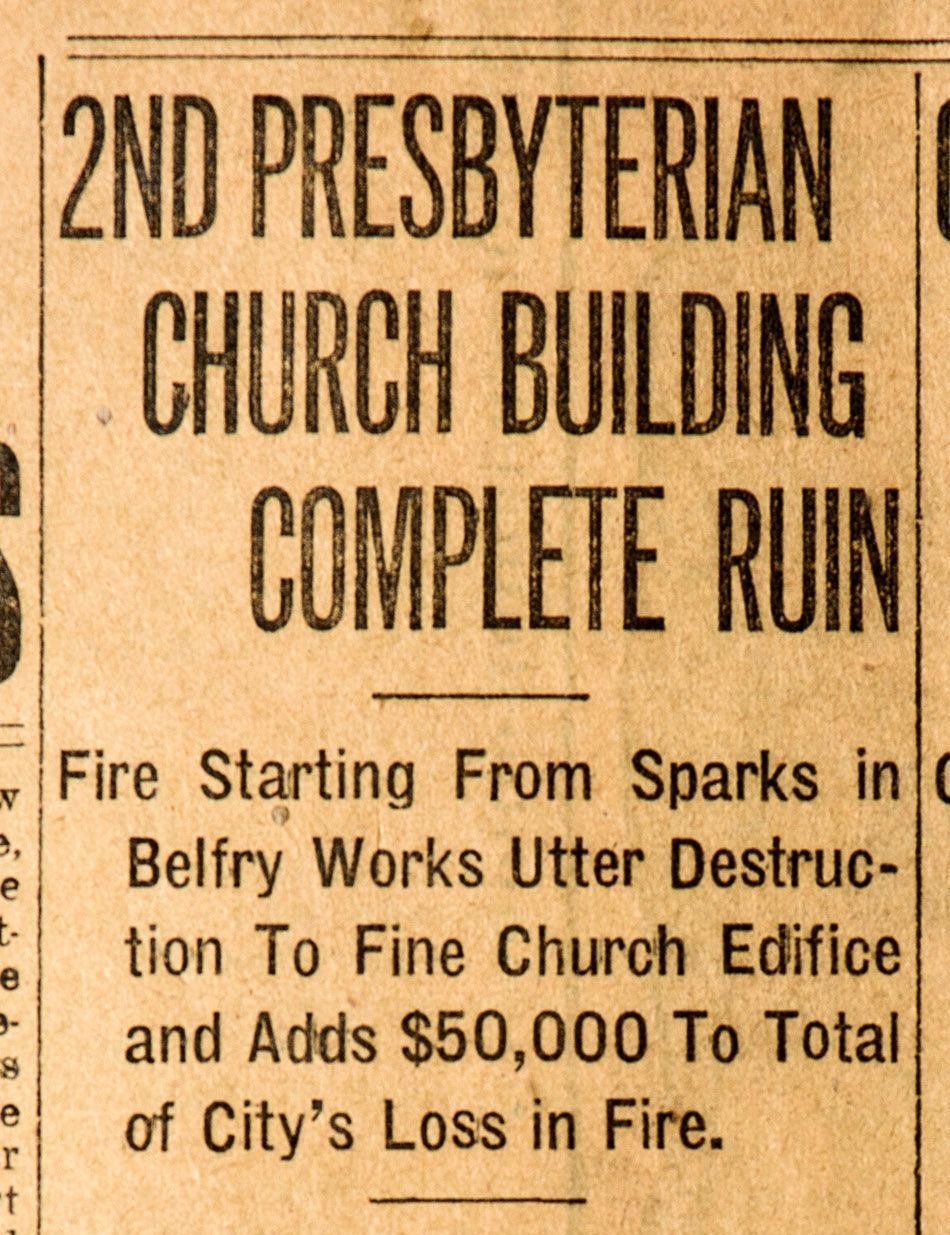
In 1917, two years following the centennial celebration of Second Presbyterian’s founding, the building was destroyed by fire, the result of sparks from a block fire igniting pigeon nests in the church tower. The building was a total loss. From 1917 to 1924, services were held in the Ben Ali Theatre on Main Street (in the area now referred to as the Ben Snyder block). Second Church maintained an average membership of 578 members during the seven years of services held in the theatre.
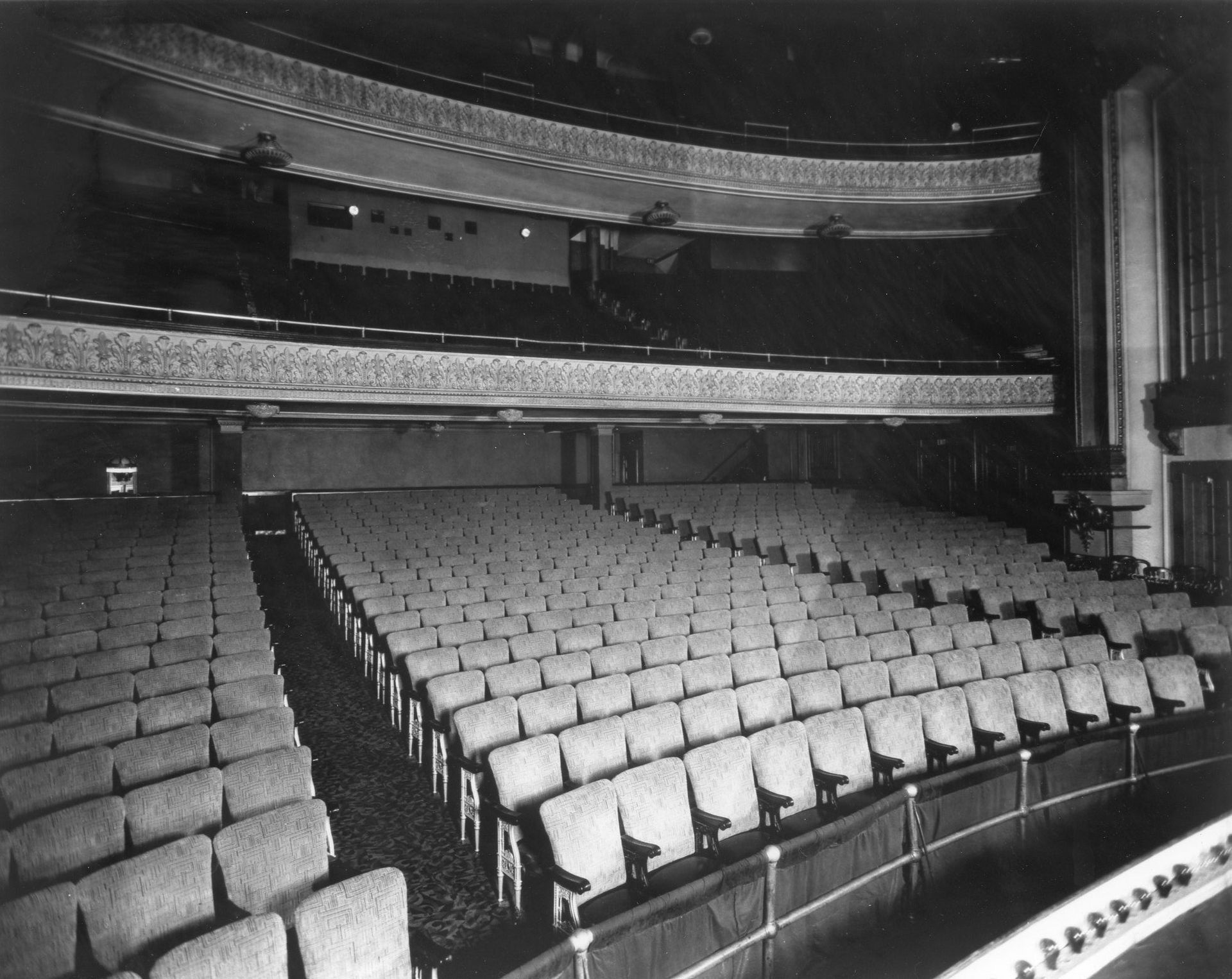
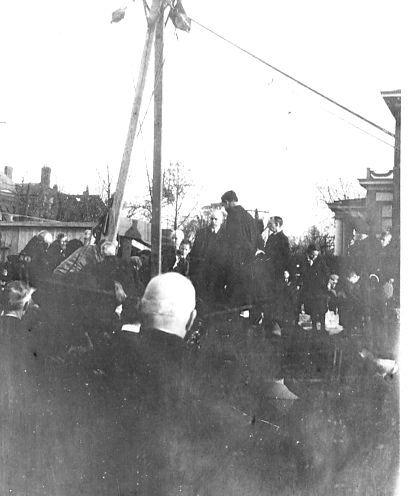
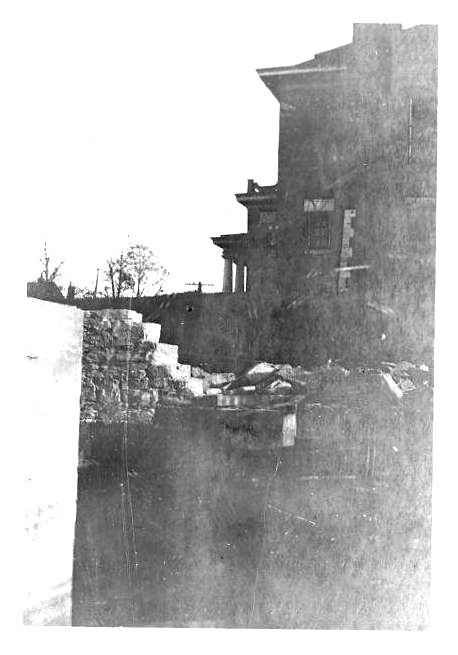
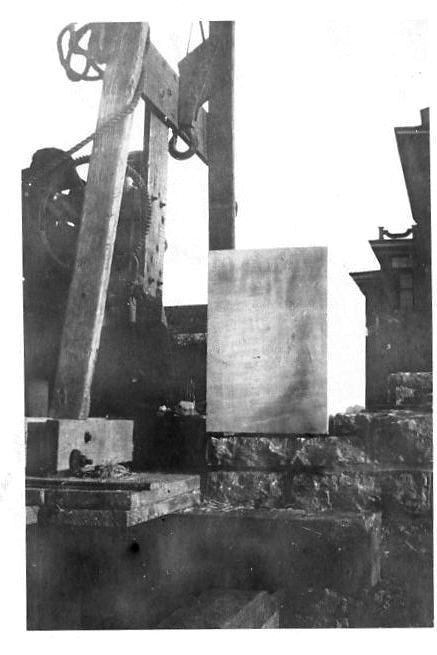
Laying of the Cornerstone of Second Presbyterian Church

In 1922,
a lot on the corner of Main Street and Ransom Avenue was purchased for the site of the new building. The new church, designed by the architectural firm of Cram and Ferguson of Boston, Massachusetts, was dedicated by Pastor Dr. Benjamin Jay Bush, on December 14, 1924. The new building was built in the American Gothic style, with the sanctuary designed in the form of the Cross.

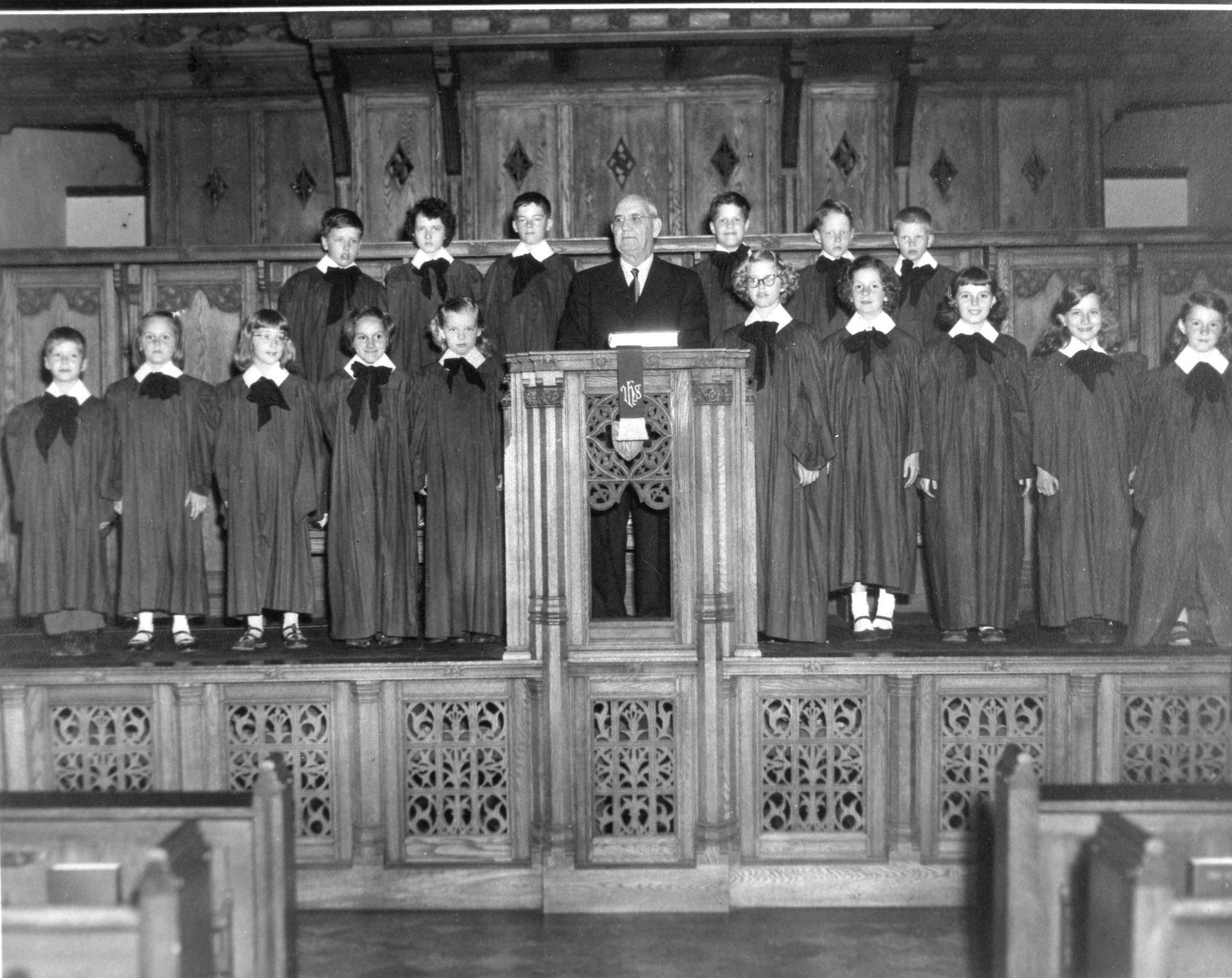
Children's Choir with Pastor Jesse Herrmann
(Also Pictured: Patty Smith, Peggy Allison)
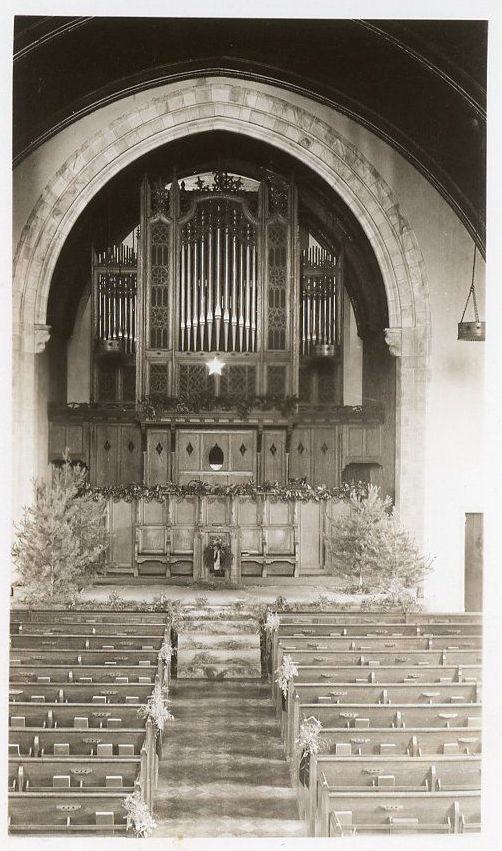
Christmas 1937
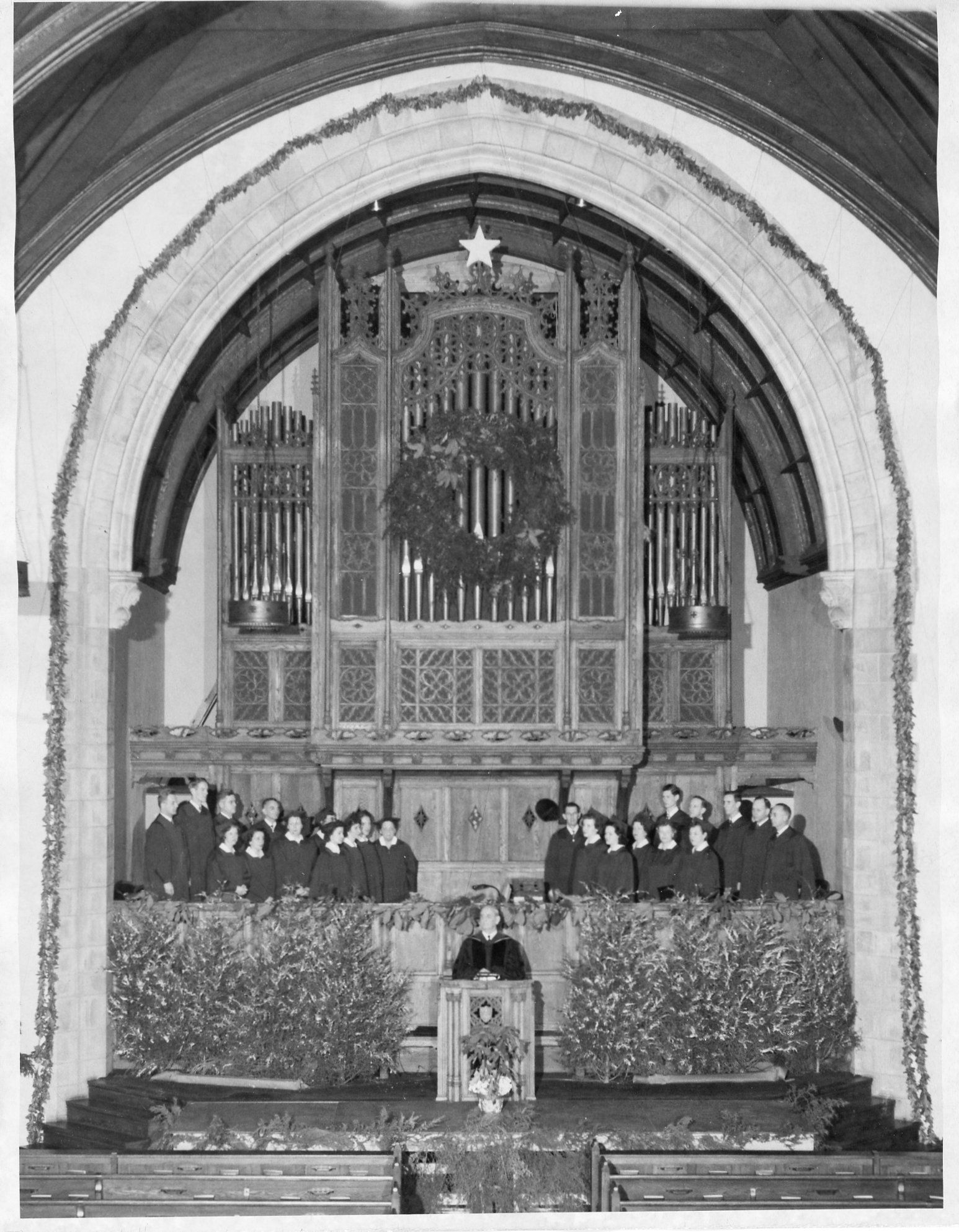
Christmas 1949
1950-1990
A Time of Growth & Expansion
Jesse Herrmann was followed by the Rev. Dr. James W. Angell, who led the church into the fight for civil rights. He practiced law for a year before entering McCormick Theological Seminary in Chicago and received a Bachelor of Divinity in May of 1950. He became the Pastor of Second in 1954.
Many younger people joined the church in these years and there was a large growth in membership. With crowded working spaces and lack of room for meetings and classes, a three story addition to the building was planned. This would include 15 new classrooms, nursery facilities, youth rooms, what is currently the Gathering Place, a garden, and a parking lot, as well as several rest rooms and storage space. This became what is now known as the Christian Education wing.
In January of 1964, a celebration for Angell and his family was held, marking his 10th year as Second's Pastor. Towards the end of his time as Pastor, in 1965, Second Presbyterian celebrated its 150th Anniversary.

In 1966, Rev. Dr. Maurice Robertson became the Pastor at Second. In 1968, he served a three month mission to Japan at the invitation of the United Church of Japan. Following the assassination of Martin Luther King Jr. in April of 1968, he conducted the ecumenical memorial service for Lexington, which was held at Second Presbyterian.
During his ministry, the Meals on Wheels program began
at Second Presbyterian and quickly spread to other churches and a hospital. Barbara Robertson had been involved with the program in Maryland and started Lexington’s first Meals on Wheels program in Lexington. Meals on Wheels started on October 27, 1969, in Barbara Robertson’s kitchen serving five clients.
To learn more about the history of Meals on Wheels at Second, click the button below.
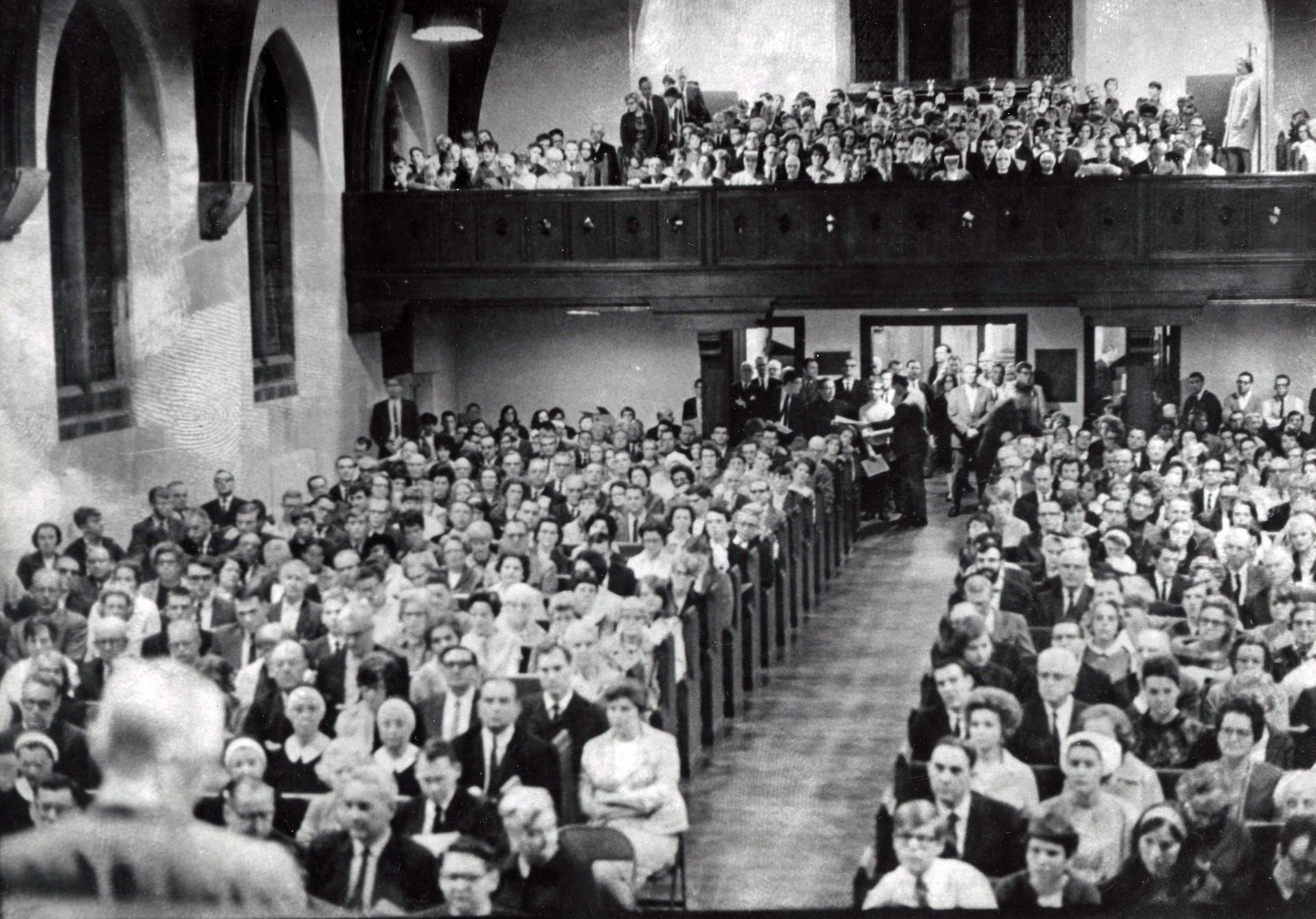
Ecumenical Memorial Service following the assassination of Martin Luther King Jr.
Following Robertson were the pastorates of Edwin Stock and Ronald P. Byars. The tradition of strong preaching and worship at Second were key features of Dr Byars’ ministry from 1980-1993. In these years the northern and southern streams of the Presbyterian Church reunited, and in 1983, Second Church became a part of the Presbyterian Church (USA). In that same year, the 8:30 am worship service was added.
The 1980's saw a lot of changes at Second! There were renovations done to the Sanctuary including replacing the worn cork floor and lighting, enlarging the choir loft, and adding a new entrance with a ramp. The church office was also equipped with computers for the first time! (Though they were not yet networked or online.) Wine was also added back to communion, now having the choice between it and wine.
In 1984, Dr. and Mrs. Sam Warren offered to provide a capital sum with the intention of creating a small endowment to support a “lectureship”—actually, an annual series of visiting preachers. The Session accepted, and the Pace-Warren lectureship was inaugurated in 1985, beginning with the first guest preacher, Dr. John Killinger, pastor of First Presbyterian Church in Lynchburg, Virginia.
In 1986, Dr. Byars proposed to the Session the creation of a staff position for Parish Nurse. Parish Nursing was a relatively new phenomenon, and there were no Parish Nurses in Lexington in any denomination. The decision was made to contract with the University of Kentucky College of Nursing who provided the services of Ruth Berry, a member of Second Church and a member of the UK nursing faculty. She became the first Parish Nurse among Presbyterians in the southeastern United States.
The 1980's also saw the creation of a library devoted to health (Barbara Sanders), a group called "Theater with Second" (Jack Wilson), and the beginnings of Second's involvement with Habitat for Humanity.
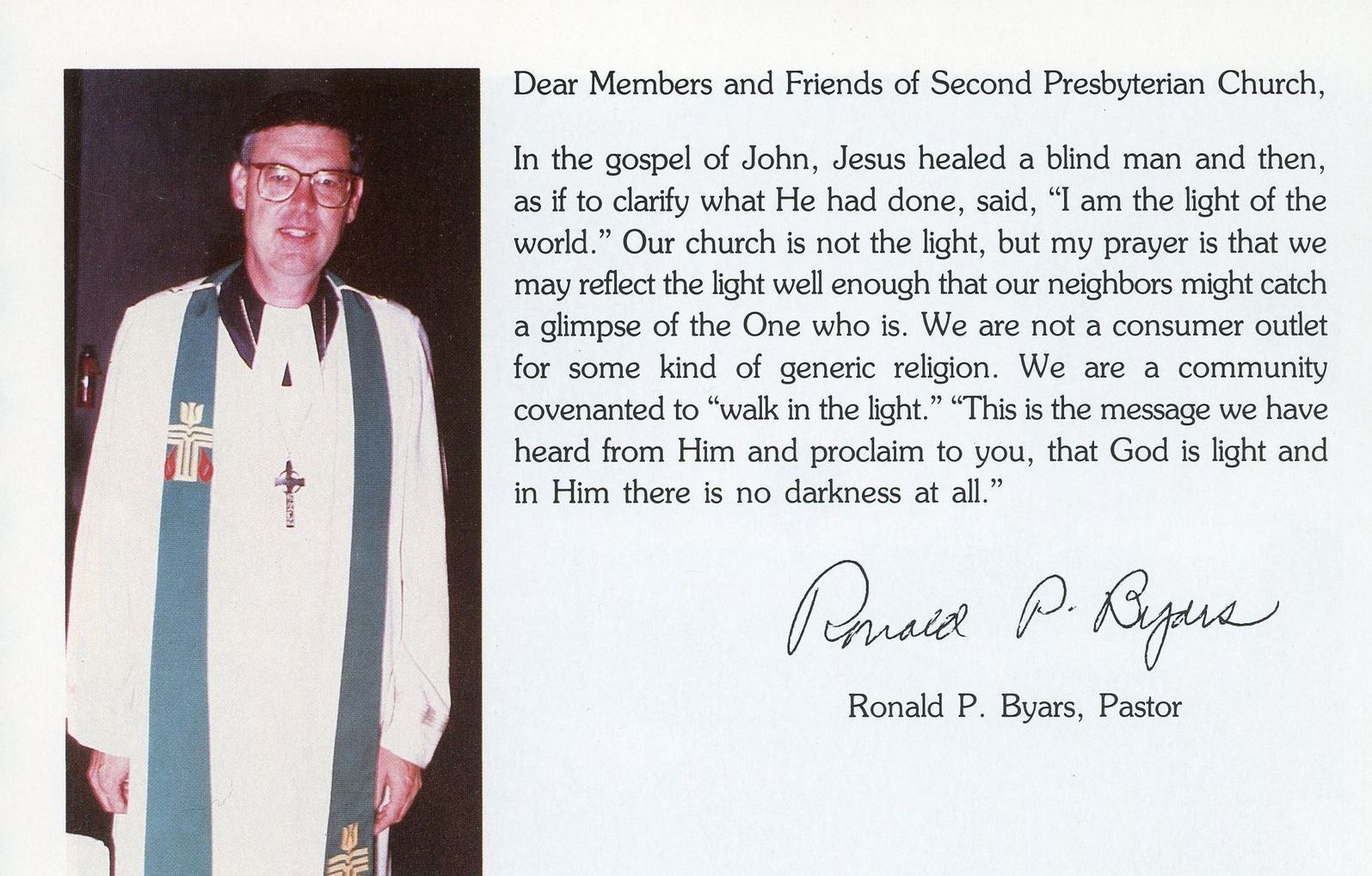
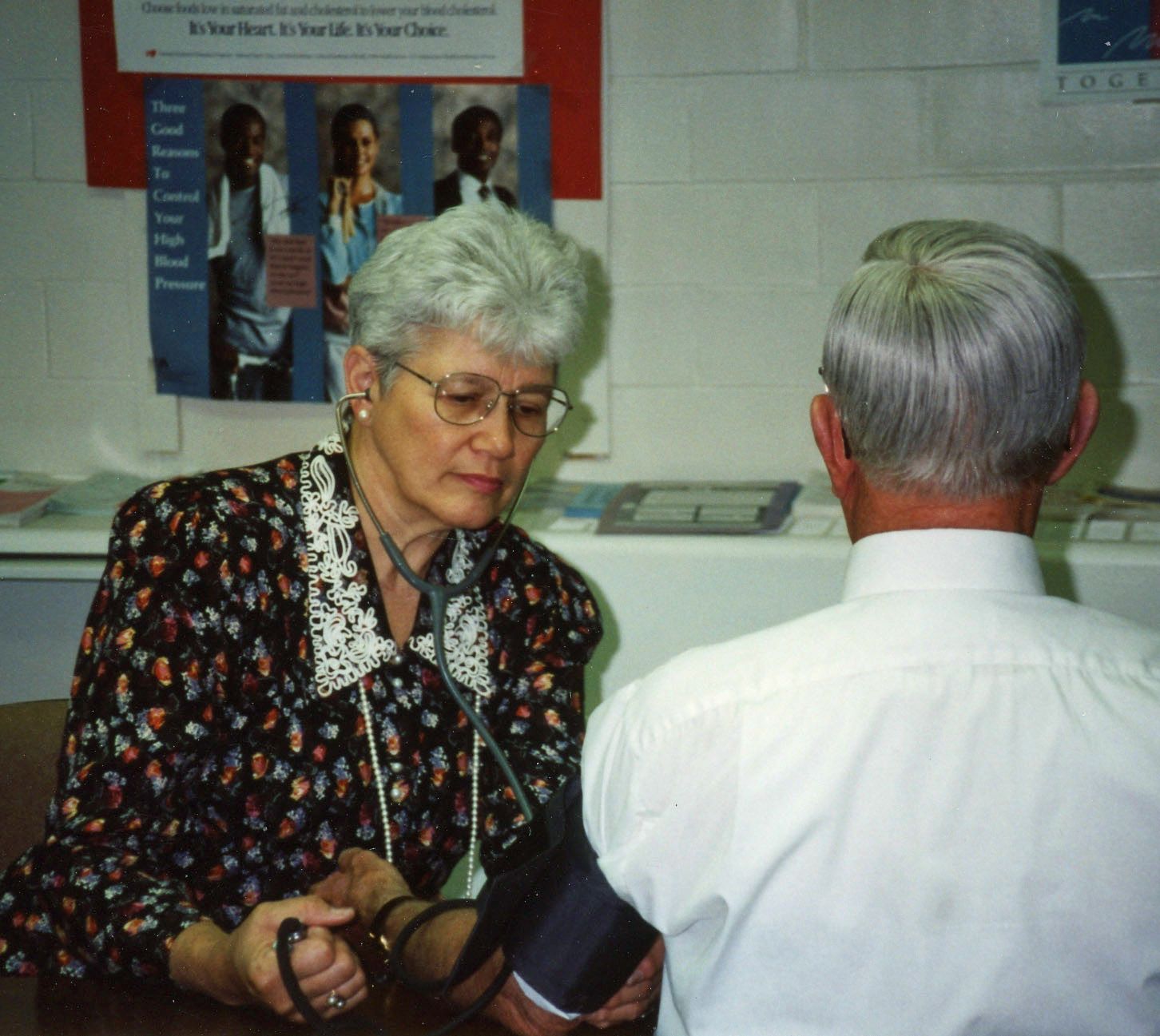
1990-Present
In 1994, the Rev. Dr. David Renwick was called as Pastor. Pastor David was known for his sense of humor. When raising funds for the Heifer Project, David agreed to kiss a cow if enough money was raised. He kissed a cow!
During Dr. Renwick’s tenure at Second Church, ending in June of 2006, the church’s role in local and out of state mission increased. Second Presbyterian became involved in a non-denominational community organization called “Building a United Interfaith Lexington through Direct Action”, better know as B.U.I.L.D. Its purpose is to bring about positive change within the Lexington community. Pastor Renwick was one of Lexington’s clergy who was instrumental in the creation of this organization.
In 2002, the current Fellowship Hall was added to the building.
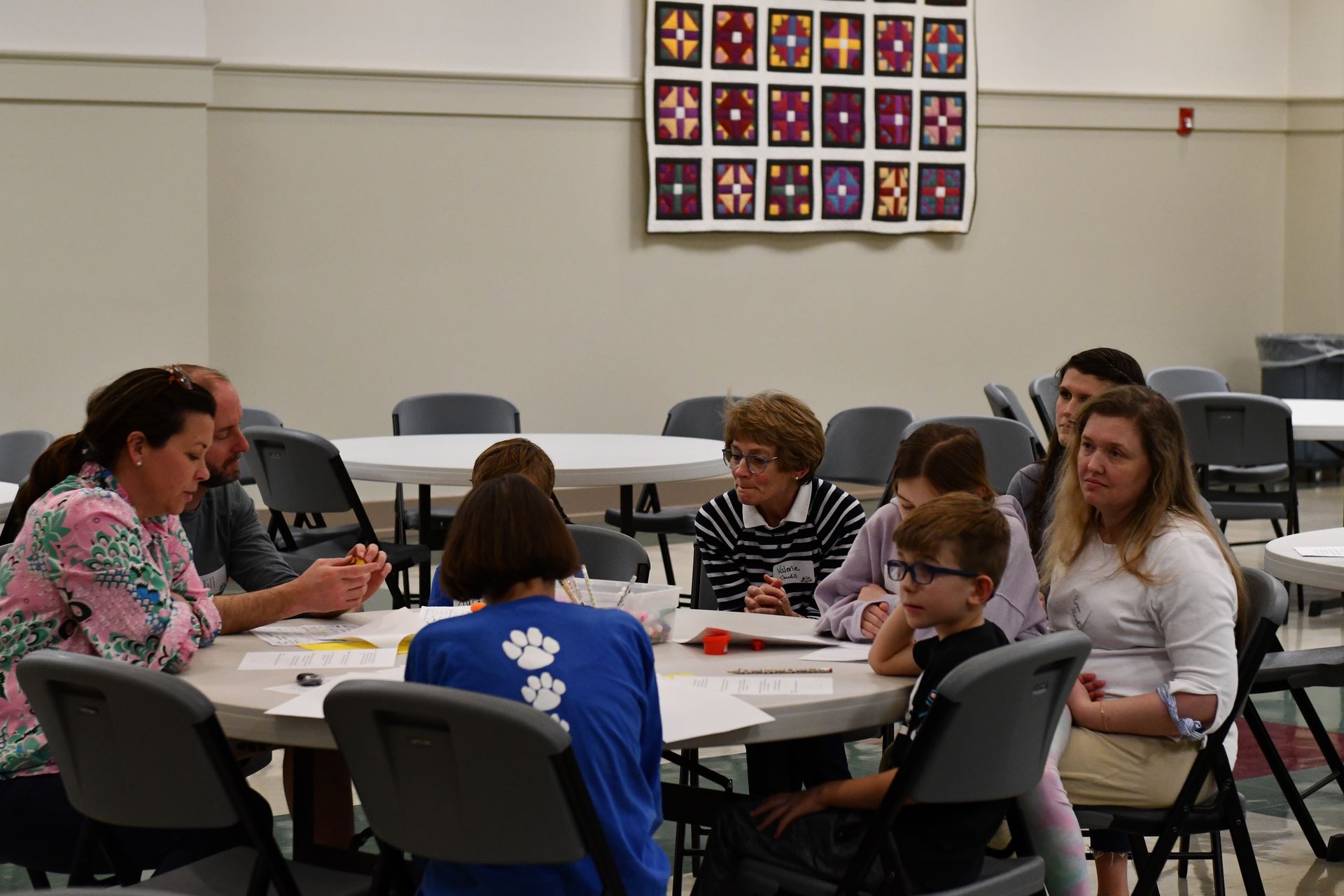
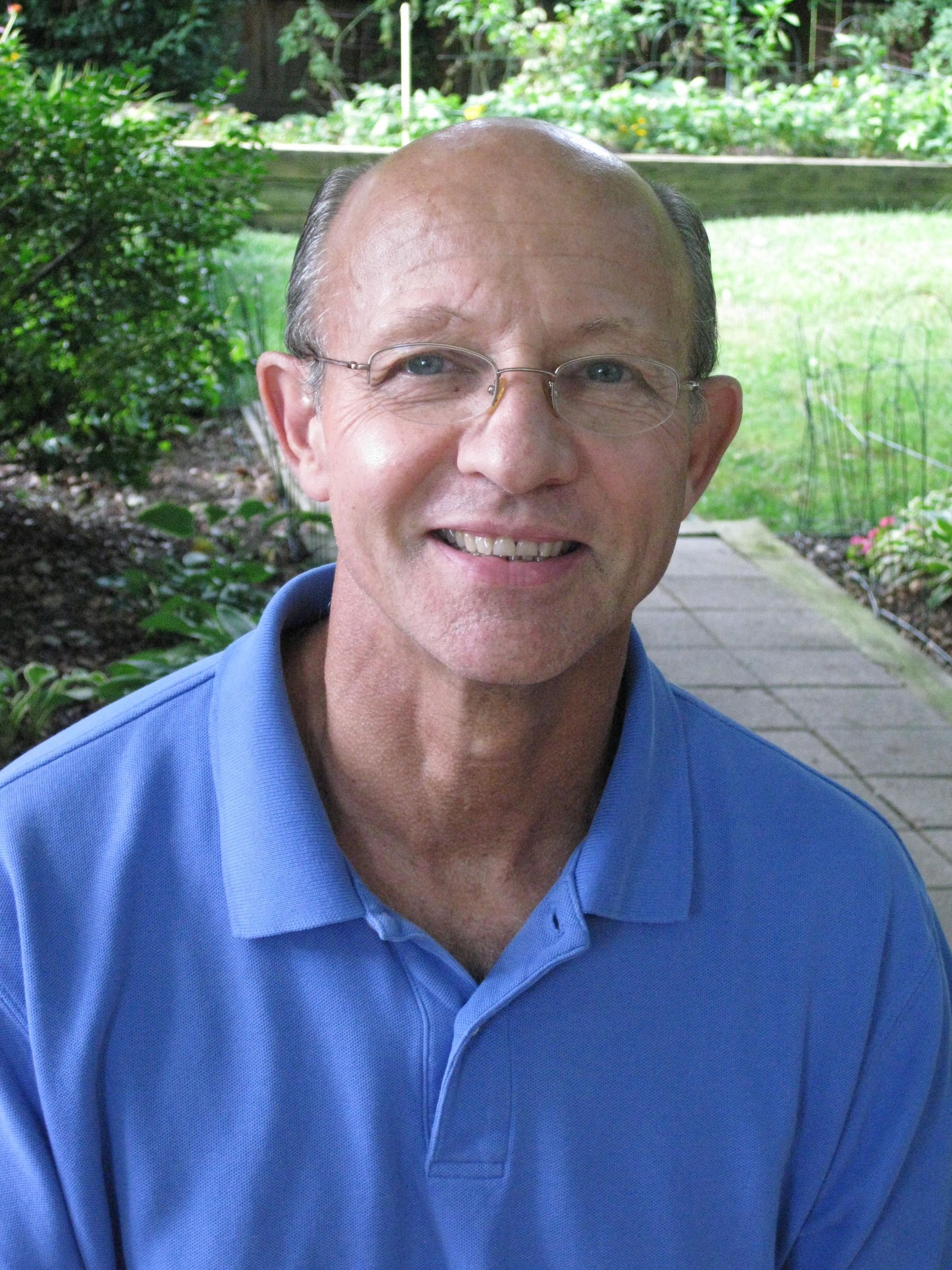
In early 2008, the Rev. Dr. Daniel T. Hans began his ministry at Second. Dr. Hans, a lover of history, encouraged the church to use its past as a springboard and not as a tether. Maximum involvement for growing commitment defined his ministry.
Beginning in 2009, Pastor Dan Hans began taking Second Church members on the annual mission trip he had led to Honduras since 1997. Teams of 60 to 90 North American medical and dental professionals as well as general helpers partnered with 2535 Hondurans to provide medical and dental care for as many as 7000 patients in a two week long clinic.
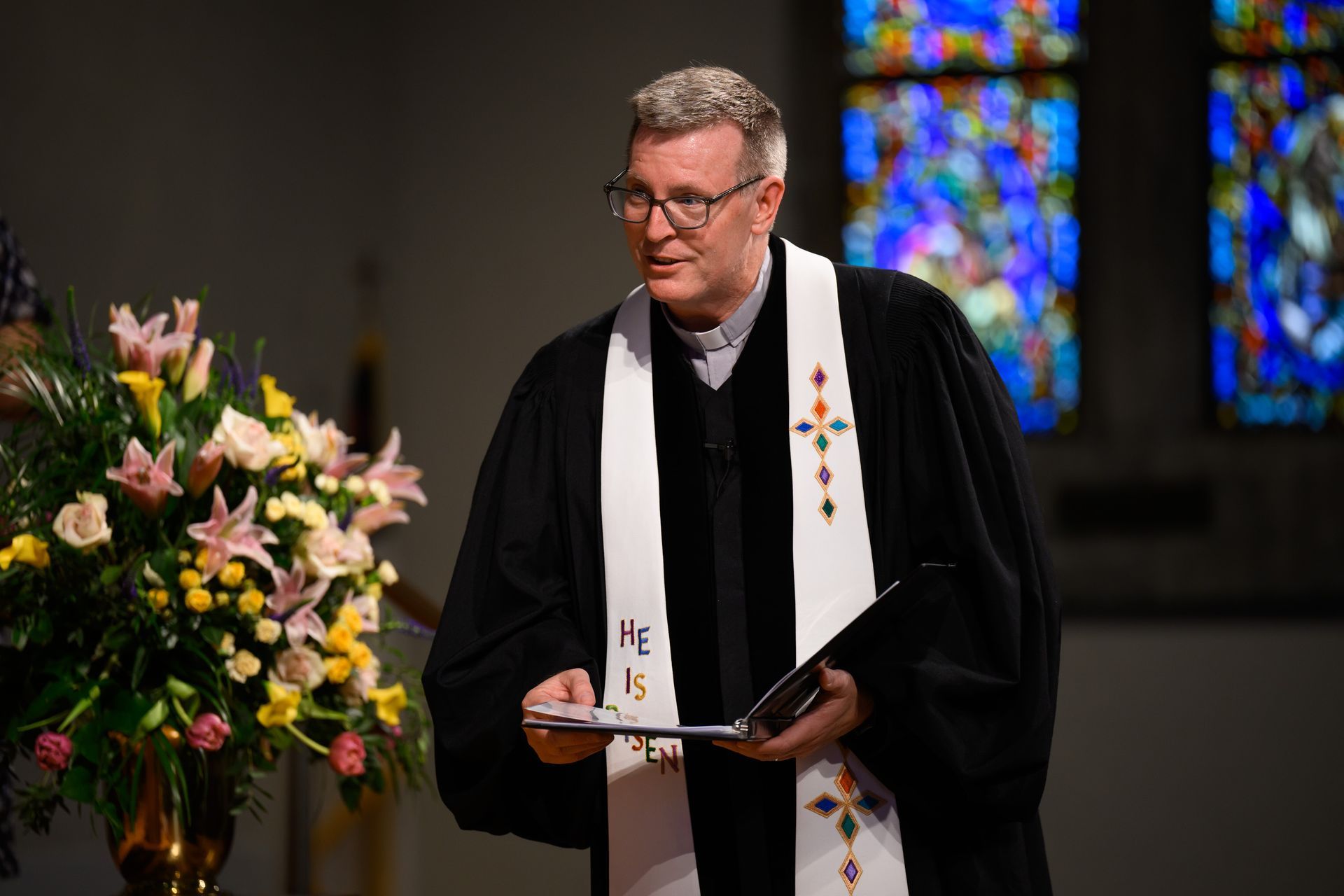
In January of 2019, Pastor John P. Leggett began his ministry with the people of Second Presbyterian.
In 2024, Second celebrated its 100th Anniversary of its Sanctuary! A celebration was held that included Mayor Linda Gorton presenting Second with a proclamation. The Communications Specialist, Jami Hart, compiled information about the symbolism of the Sanctuary.
You can read it by clicking the button below.
Prior to moving to Lexington, he most recently served as the pastor for fifteen years of Massanutten Presbyterian Church in Penn Laird, VA. He is married to Alayne, and together they have two daughters (Rachel and Sarah) and a son (Aaron). An English major with a degree from Bethel College, he also completed the Master of Divinity at Louisville Presbyterian Theological Seminary, as well as Master of Theology in Preaching and Worship from Princeton Theological Seminary. John enjoys hiking, photography, and writing.
Second Church has a rich heritage — and a bright future. We hope that you will be a part of that future as we continue in our third century!


